Birds living in oceanic habitats can be found worldwide, from the Arctic to the Antarctic. These birds have adapted to life in the open ocean, where they face challenges such as storms, long-distance migrations, and a scarcity of food.
Despite the challenges, oceanic birds have carved out a niche for themselves and play important roles in marine ecosystems. They help cycle nutrients, control populations of smaller marine animals, and serve as indicators of changes in the ocean environment.
Many species of oceanic birds are also popular among birdwatchers and ecotourists, attracting visitors from around the world.
In this article, we will explore the different types of birds found in oceanic habitats, their adaptations, and their role in the marine ecosystem.
1. Petrels
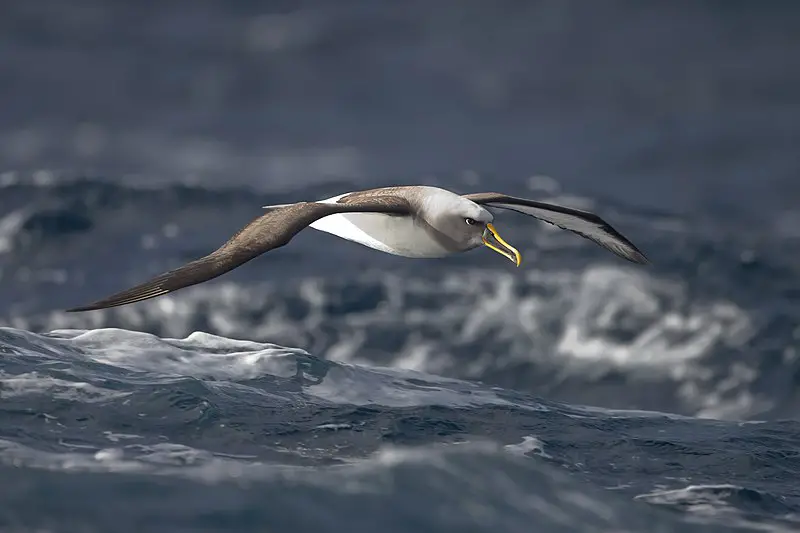
Petrels are seabirds that belong to the Procellariiformes order. They come from four families: albatrosses, petrels and shearwaters, as well as two storm petrel families.
Commonly referred to collectively as ‘petrels’, these birds have a long history of being called Tubinares or tubenoses – referring to their distinctive beaks which feature small tubes on either side for them to detect food in dark seawater.
Petrels mainly consume fish, squid and other small marine creatures, but they also feed off carrion when needed.
These waterbirds can fly great distances over open oceans in search of food with no land insight.Scientific classification:
| Kingdom | Animalia |
| Phylum | Chordata |
| Class | Aves |
| Clade | Austrodyptornithes |
| Order | Procellariiformes Fürbringer, 1888 |
Also Featured In: Beautiful Brazilian Birds, Birds that Can Survive in the Storm
2. Northern Storm Petrels
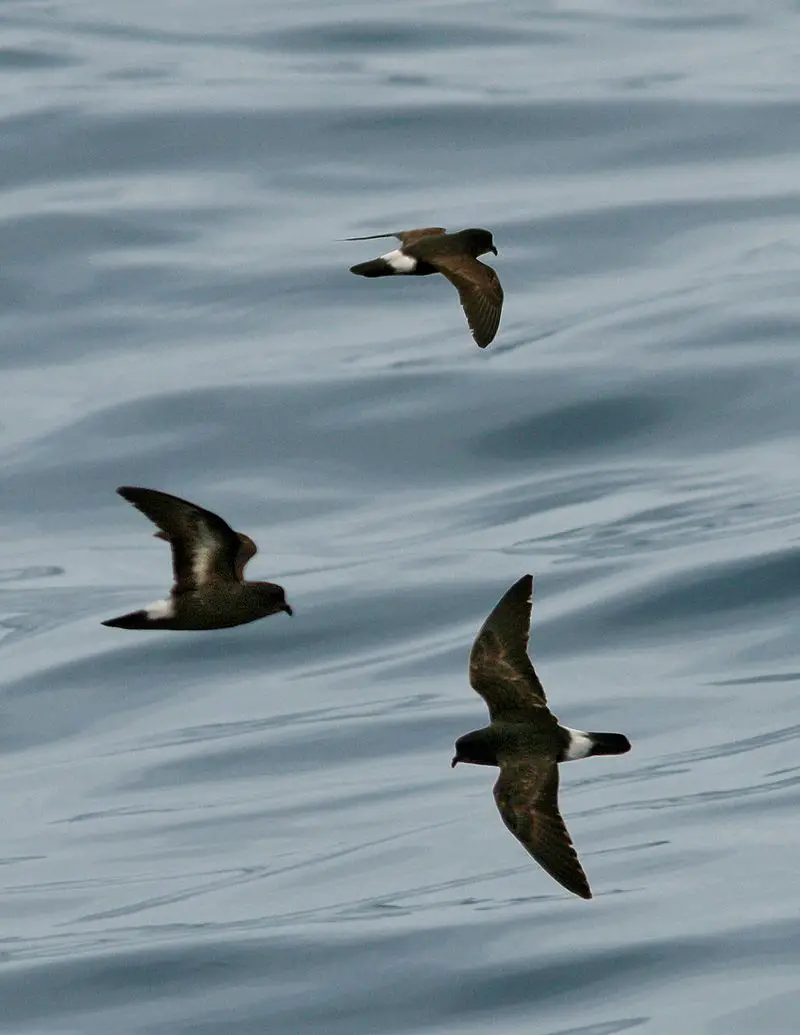
Northern storm petrels are one of the smallest seabirds, inhabiting oceans all over the world.
They have a unique ability to hover over water and pick planktonic crustaceans and small fish from the surface.
Northern storm petrels belong to the genus Hydrobates in family Hydrobatidae, part of Procellariiformes order.
This species was once lumped with austral storm petrel but recent studies show that they weren’t related closely which led them being split into two distinct species now.
These birds can be identified by their dark grey upperparts and wings along with white underparts when seen from afar while feeding on ocean’s surface.Scientific classification:
| Kingdom | Animalia |
| Phylum | Chordata |
| Class | Aves |
| Order | Procellariiformes |
| Family | Hydrobatidae Mathews, 1912 |
| Genus | Hydrobates F. Boie, 1822 |
Also Featured In: Birds of Sweden, Lebanon Birds Live in Semi-Desert Areas
3. Magnificent Frigatebird
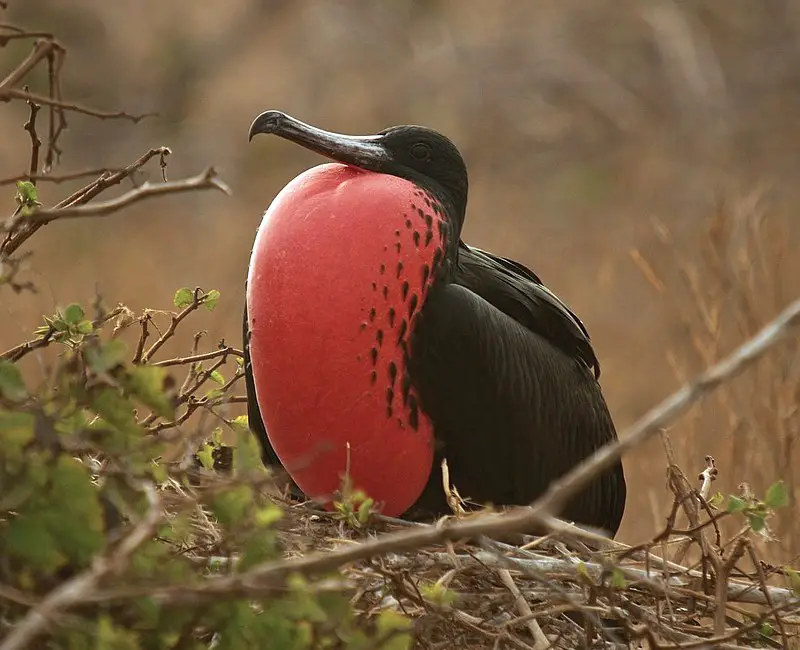
The Magnificent Frigatebird is the largest species of frigatebird, measuring between 89 and 114 cm in length and having a wingspan of 7-8 ft.
It can be found over tropical waters off America from northern Mexico to Peru on the Pacific coast, as well as Florida down south.
Its diet consists mainly of fish they take from other seabirds or snatch directly from the ocean surface while flying low above it.
They also feed on crustaceans and squid when available too.
This impressive bird has an unmistakable silhouette with its long pointed wings, forked tail feathers and male’s red gular pouch which inflates during courtship displays.Scientific classification:
| Kingdom | Animalia |
| Phylum | Chordata |
| Class | Aves |
| Order | Suliformes |
| Family | Fregatidae |
| Genus | Fregata |
| Species | F. magnificens |
Also Featured In: Top Birds Found in Mexico, Most Common Birds in South America Birds
4. Sulids
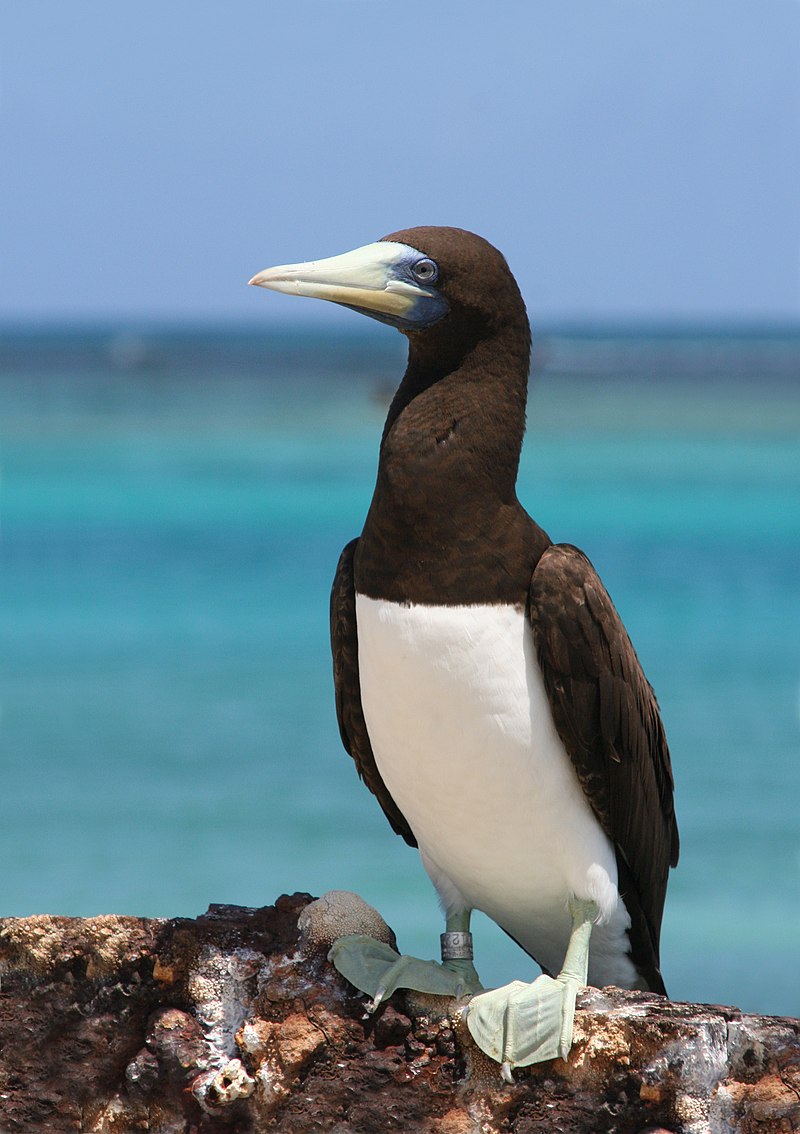
Sulids are a medium-large family of coastal seabirds that includes both gannets and boobies. They hunt by diving into the water to catch their prey, such as fish, squid or crustaceans.
These birds have long wings which they use to soar gracefully while searching for food. Sulids also possess webbed feet and strong beaks designed for snatching up prey from below the surface of the sea.
Members of this family vary in size; some species can grow over 3ft tall with a wingspan reaching 5 ft. The 10 different species all belong either to Sula (boobies) or Morus (gannets).
It’s easy to tell them apart due to differences in colouration, behaviour and DNA sequences between each type.
In summary, sulids are impressive hunters who plunge dive after food at sea but still manage remain graceful aviators despite their large size.Scientific classification:
| Kingdom | Animalia |
| Phylum | Chordata |
| Class | Aves |
| Order | Suliformes |
| Family | Sulidae Reichenbach, 1849 |
Also Featured In: Egyptian Birds, Common Denmark Birds
5. Cormorants
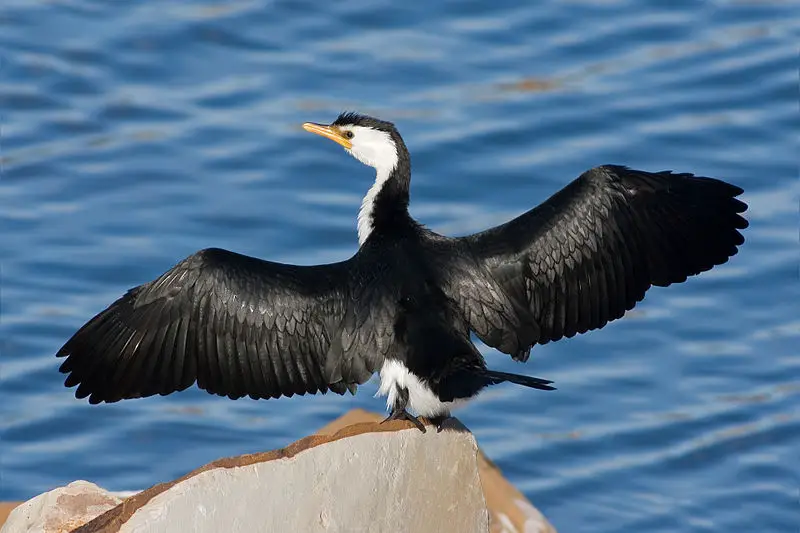
Cormorants are a family of aquatic birds found around the world. They include 40 species, such as great cormorants and common shags.
In Britain, these two species are the most commonly seen in their natural habitats.
Cormorants have long necks, webbed feet and can be identified by their glossy black feathers which they use to help them swim through water with ease as they hunt for food like fish or crustaceans.
They have an impressive wingspan often reaching up to five feet across when fully extended.
Despite being strong swimmers, these birds also enjoy spending time perched on rocks near rivers or shorelines where they will preen themselves in order to keep clean and dry during cooler weather conditionsScientific classification:
| Kingdom | Animalia |
| Phylum | Chordata |
| Class | Aves |
| Order | Suliformes |
| Family | Phalacrocoracidae Reichenbach, 1850 |
Also Featured In: Most common Birds in France, Turkey Birds You Should Know
6. Procellariidae
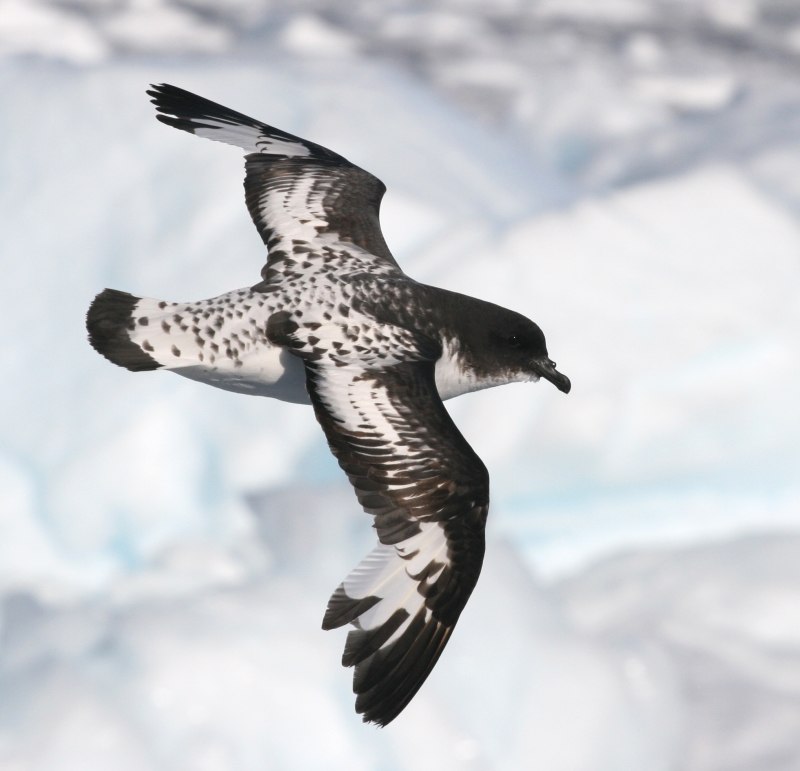
Procellariidae is a diverse family of seabirds belonging to the bird order Procellariiformes.
These birds are commonly referred to as tubenoses and include fulmarine petrels, gadfly petrels, diving petrels, prions, and shearwaters.
They range in size from the small storm-petrel which measures around 18cm long to the giant albatross which can reach up to 3 meters in length.
Generally found near oceans or coasts where they feed on fish as well as squid and other marine life depending on species.
Many procellariids will also nest inland during breeding season before returning back out at sea for most of their lives.
Their wings have specially adapted feathers that give them incredible gliding abilities allowing them literally fly with minimal effort over vast distances across oceanic regionsScientific classification:
| Kingdom | Animalia |
| Phylum | Chordata |
| Class | Aves |
| Order | Procellariiformes |
| Family | Procellariidae Leach, 1820 |
Also Featured In: Most Common Romanian Birds, Bulgarian Birds
7. Southern Giant Petrel
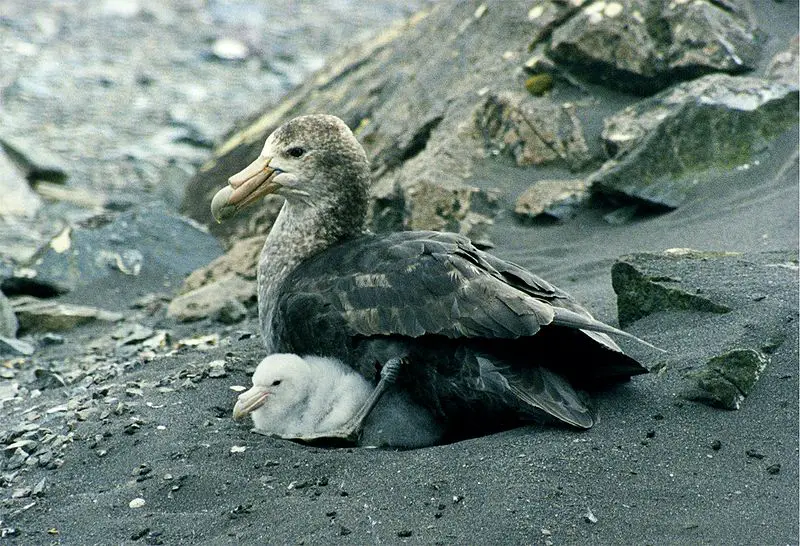
The Southern giant petrel is a large seabird native to the southern oceans, and it overlaps broadly with its similar counterpart, the Northern giant petrel.
Adults of both species can be distinguished by their bill-tip color: greenish in the south and yellowish in the north.
The Southern giant petrel also goes by other names such as Antarctic giant petrel, Giant fulmar, Stinker or Stinkpot.
These birds are around 75 cm (30 inches) long on average and have striking white plumage combined with brown wings that give them an impressive appearance while they soar through skies above open waters searching for food like fish, krill and squid – which they can catch up to 100 meters below sea level.Scientific classification:
| Kingdom | Animalia |
| Phylum | Chordata |
| Class | Aves |
| Order | Procellariiformes |
| Family | Procellariidae |
| Genus | Macronectes |
| Species | M. giganteus |
Also Featured In: Uganda Birds Species, Birds that Live around Victoria
8. Auk
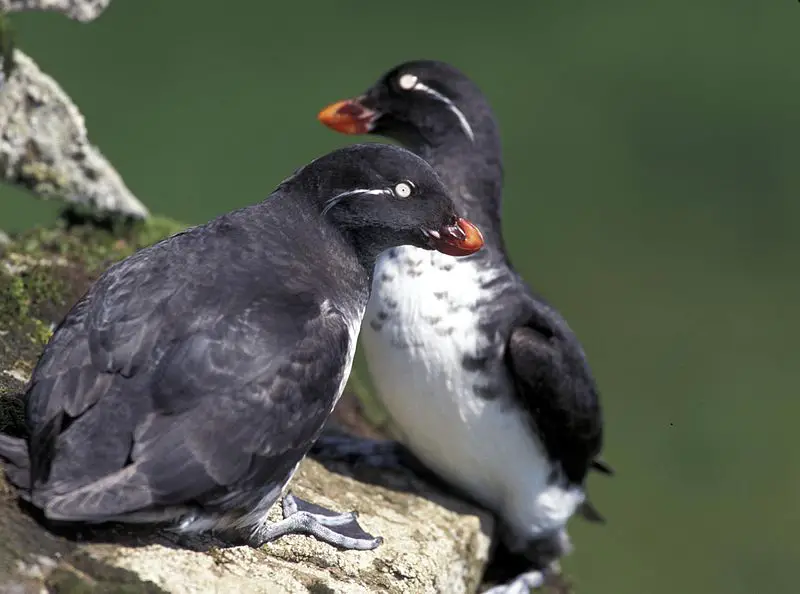
Auk is a family of birds from the order Charadriiformes. They are excellent swimmers and divers, able to “fly” through water. There are 25 species divided into 11 genera in this family, with the great auk being extinct.
Auks can fly but their walking appears awkward due to their thick feathers that make them heavy on land.
The most notable feature of these aquatic birds is the large bills they possess which helps them catch fish underwater.
Apart from feeding on sea creatures like squid or shrimp, auks also feed on grains found near shorelines during winter months when food sources become scarce in open waters.Scientific classification:
| Kingdom | Animalia |
| Phylum | Chordata |
| Class | Aves |
| Order | Charadriiformes |
| Suborder | Lari |
| Family | Alcidae Leach, 1820 |
Also Featured In: Common Birds in Canada, Italian Birds You Should Know
9. Atlantic Puffin
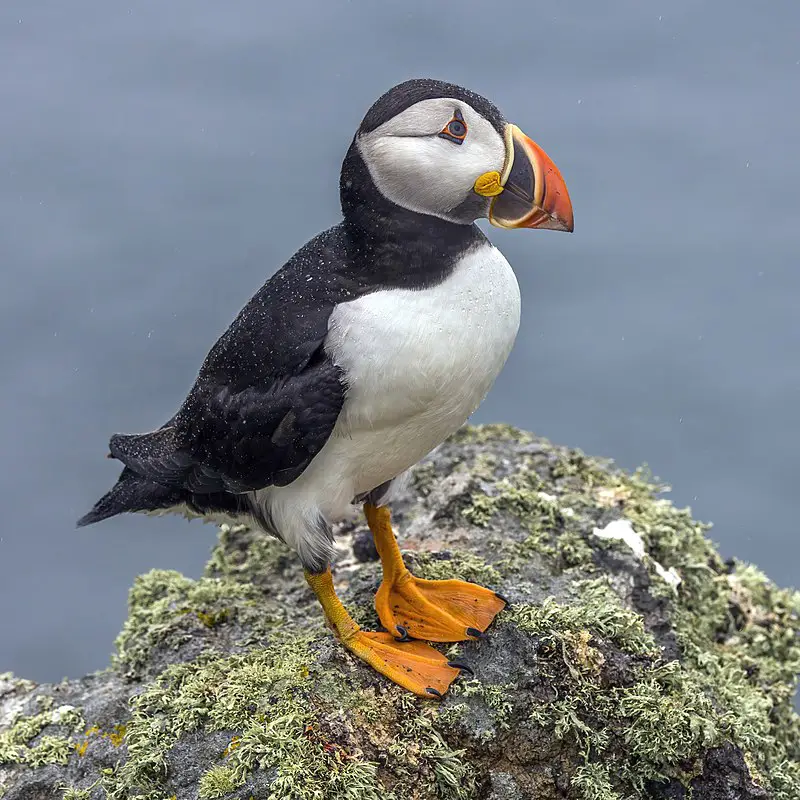
The Atlantic puffin is a seabird that belongs to the auk family. It has two related species found in the northeastern Pacific, namely tufted and horned puffins.
This bird breeds widely throughout Russia, Iceland, Ireland, Norway, Greenland and Canada’s Newfoundland & Labrador as well as Nova Scotia regions of Faroe Islands.
Its colorful beak with markings of yellowish-orange during mating season makes it stand out among other birds.
An interesting fact about this sea-dweller is its ability to fly underwater; they use their wings for propulsion while swimming.
The Atlantic puffin diet consists mainly of fish caught from shallow waters near shorelines or cliffsides where they nest annually during springtime months before embarking on long migrations southward towards winter grounds at seaside coasts until spring returns once again.Scientific classification:
| Kingdom | Animalia |
| Phylum | Chordata |
| Class | Aves |
| Order | Charadriiformes |
| Family | Alcidae |
| Genus | Fratercula |
| Species | F. arctica |
Also Featured In: Most Common Nature Birds, Birds that Live in Newfoundland and Labrador
10. Skuas
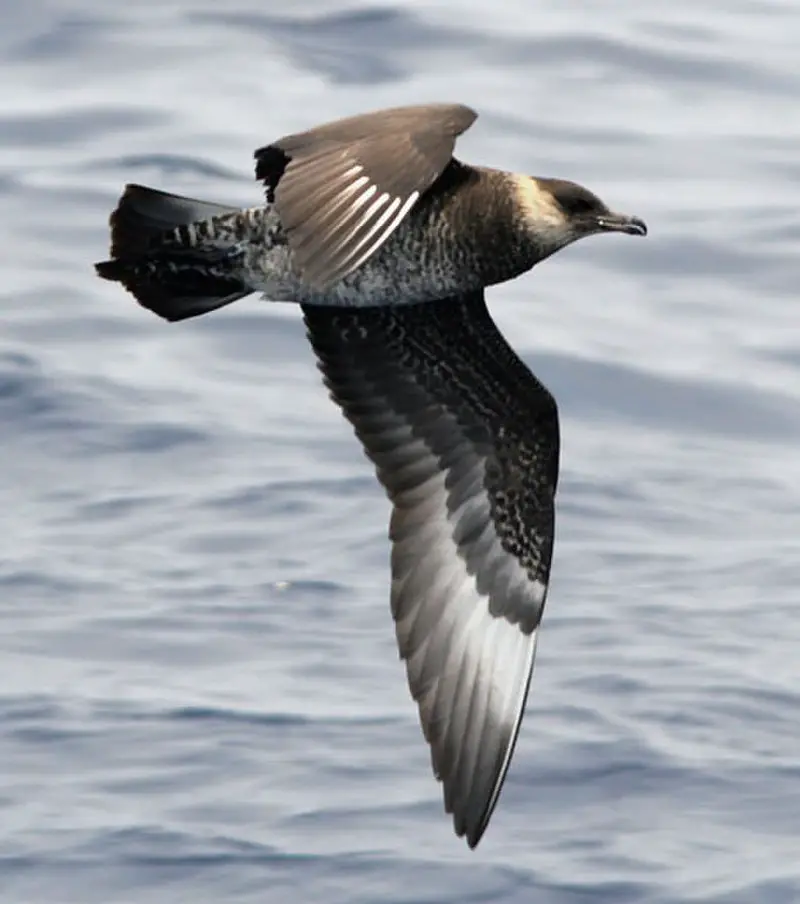
Skuas are a group of predatory seabirds with seven species, all belonging to the genus Stercorarius.
They are also known as “Jaegers” in North America and their name originates from the Faroese word for Great Skua – skúgvur.
These birds typically inhabit coastal areas or open oceans where they feed on fish, krill and other marine creatures.
Skuas can be distinguished by their pointed wings which help them fly long distances while hunting food.
Their distinctive colouration varies depending on age and habitat but generally includes greyish brown upperparts and white underparts with black streaks along its belly area.
The overall size ranges from 24-40 cm making these one of the larger sea bird species.Scientific classification:
| Kingdom | Animalia |
| Phylum | Chordata |
| Class | Aves |
| Order | Charadriiformes |
| Suborder | Lari |
| Family | Stercorariidae Gray, 1871 |
| Genus | Stercorarius Brisson, 1760 |
Also Featured In: Birds of Morocco, Syrian Birds You Need to Know
11. Pelican
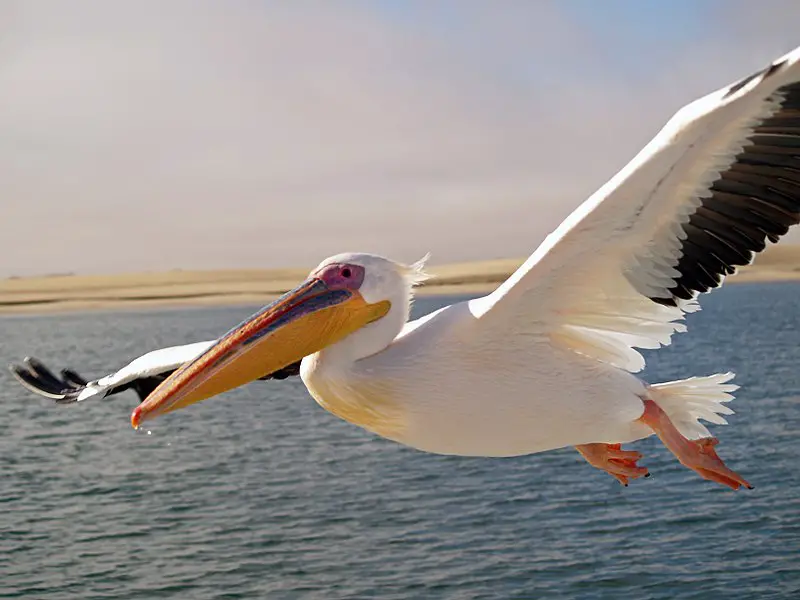
Pelicans are a large water bird and form part of the family Pelecanidae. They have long beaks, allowing them to scoop up prey from both land and sea with ease.
Their most distinctive feature is their huge throat pouch which they use to drain water before swallowing their food.
Most pelican species have predominantly pale plumage however exceptions such as the brown and Peruvian pelicans exhibit darker colouring.
The bill, face skin and pouch of all Pelican species become brightly coloured during breeding season in order to attract mates.
Pelicans can often live up to 25 years due to the fact that they eat mostly fish which provides them with enough nutrients for longevity.Scientific classification:
| Kingdom | Animalia |
| Phylum | Chordata |
| Class | Aves |
| Order | Pelecaniformes |
| Family | Pelecanidae |
| Genus | Pelecanus Linnaeus, 1758 |
Also Featured In: Most common birds in Australia, Famous Paintings Birds
12. Blue-Footed Booby
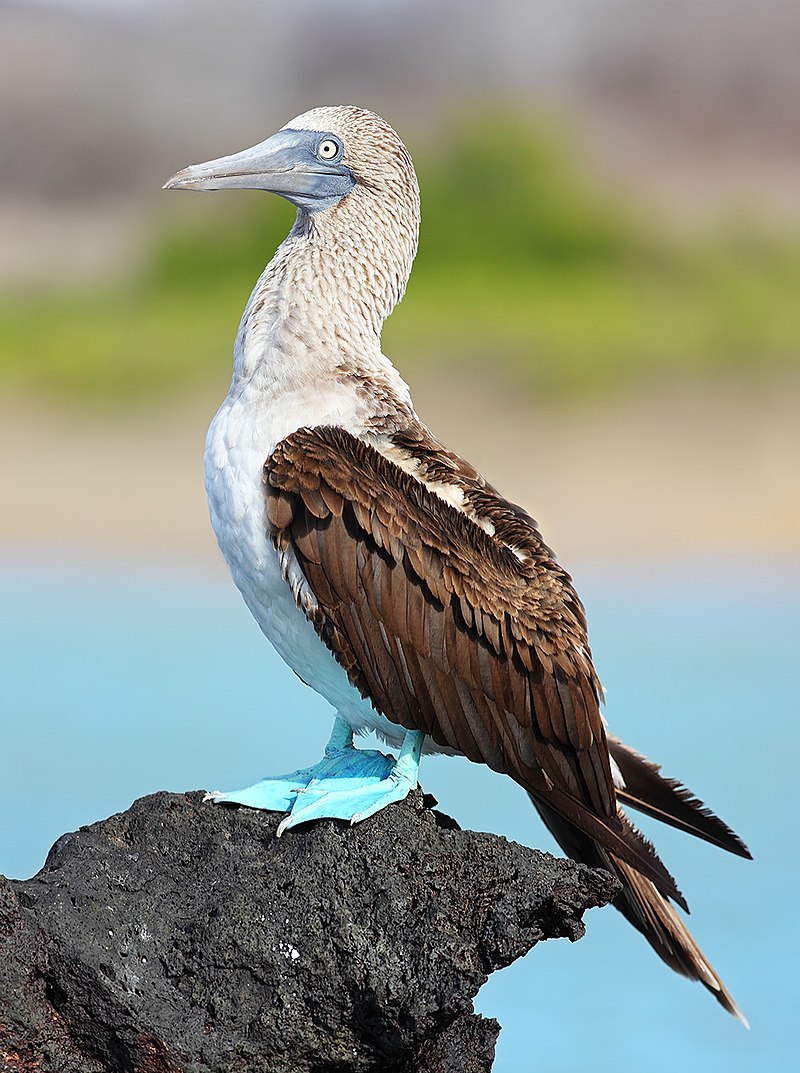
The blue-footed booby is a marine bird that can be found in subtropical and tropical parts of the eastern Pacific Ocean.
It’s one of six species from the same genus, with its unique bright blue feet being a product of their diet as well as an attractive mating ritual for males.
During this ritual, they lift up their feet to show off their brilliant colouring to potential mates.
Boobies are excellent divers, using these skills primarily to hunt fish and squid close by reefs or open ocean waters – plunging into the sea from heights between 10–30 metres.
They also feed on smaller prey such as crustaceans which float near the surface.
Their wingspan averages 1 metre across, making them graceful flyers over large distances both on land and above water surfaces alike.Scientific classification:
| Kingdom | Animalia |
| Phylum | Chordata |
| Class | Aves |
| Order | Suliformes |
| Family | Sulidae |
| Genus | Sula |
| Species | S. nebouxii |
Also Featured In: Birds of Ecuador, Galapagos Birds You Should Know
13. Northern Gannet
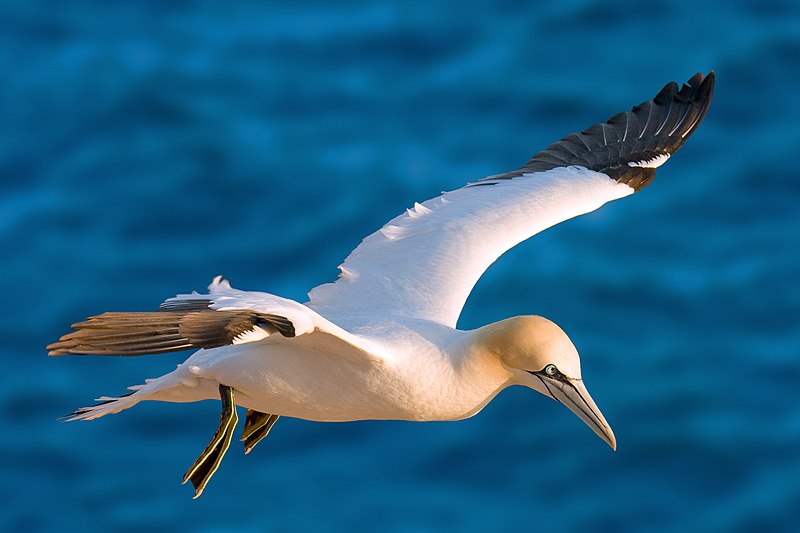
The Northern Gannet is the largest species of seabird in the northern Atlantic, with a white body and long neck.
It has yellowish head feathers and black tipped wings that can reach up to 6 feet across when fully extended.
The beak is large and orange-yellow in color. This bird breeds along western Europe’s coasts as well as northeastern North America.
They forage for fish by plunging into the sea from high above, making them an impressive sight to behold on any given day.
Their diet consists mainly of herring, mackerels or sand eels which they catch midair after diving at speeds reaching over 100 miles per hour.
With their striking features these birds are truly majestic creatures that have been around since prehistoric times – a testament to their hardiness and adaptability.Scientific classification:
| Kingdom | Animalia |
| Phylum | Chordata |
| Class | Aves |
| Order | Suliformes |
| Family | Sulidae |
| Genus | Morus |
| Species | M. bassanus |
Also Featured In: Birds found in portugal, Birds Live in Tunisia
14. Common Murre
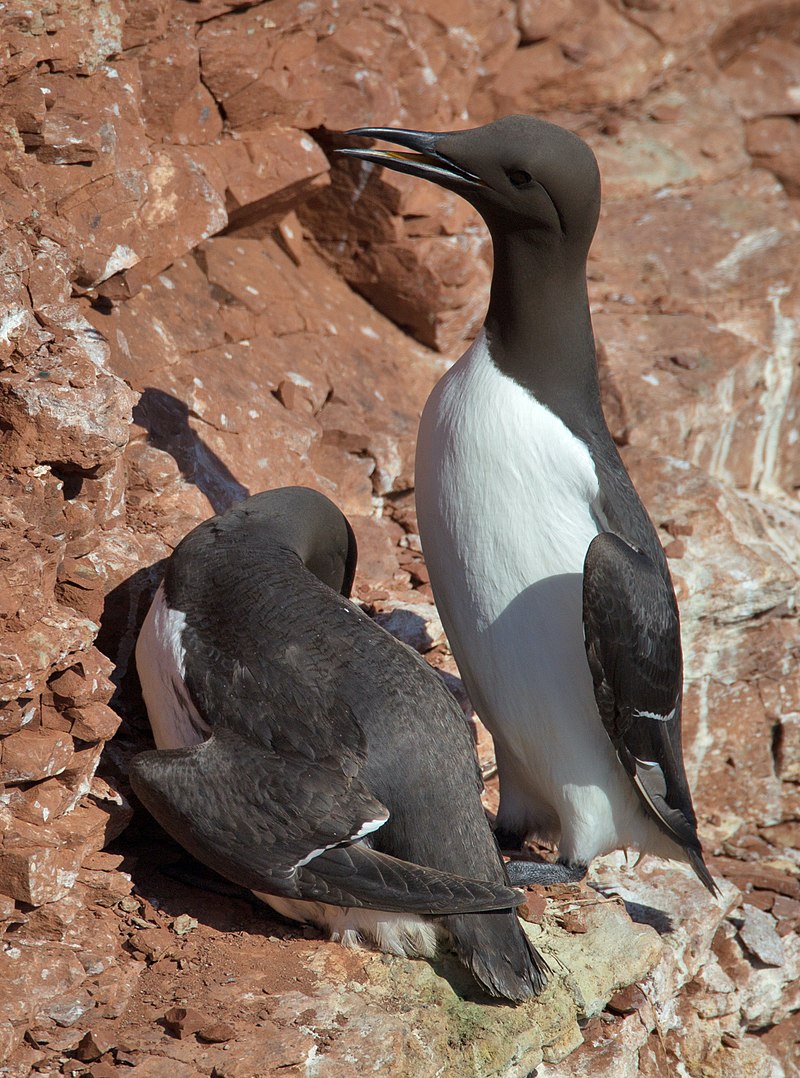
The Common Murre, also known as a Common Guillemot is an Arctic and Boreal seabird that can be seen in North Atlantic and North Pacific oceans.
It has a stocky body with white underparts, black upper parts and striking yellow legs.
They are relatively large birds compared to their relatives but have weak flying abilities – they fly fast but not very agilely.
Their agility lies underwater instead where they are able to dive deep into the ocean depths for food such as fish, crustaceans or molluscs.
During breeding season these birds come ashore on rocky cliffsides or islands where they create burrows for nesting purposes.
The female lays one egg each year which both parents share incubation duties over it until hatching at around 30 days later.Scientific classification:
| Kingdom | Animalia |
| Phylum | Chordata |
| Class | Aves |
| Order | Charadriiformes |
| Family | Alcidae |
| Genus | Uria |
| Species | U. aalge |
Also Featured In: Norway Birds, Most Common Scotland Birds
15. Roseate Tern
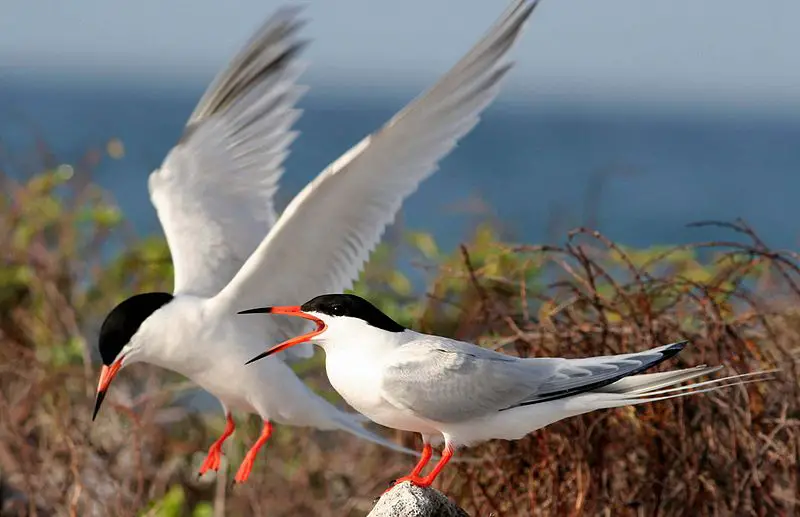
The Roseate Tern (Sterna dougallii) is a species of bird that belongs to the family Laridae. It gets its name from its pink breast in breeding plumage, which gives it a “roseate” appearance.
The genus Sterna comes from Old English and means “tern” while the specific dougallii refers to Scottish physician and collector Dr Peter McDougall (1777–1814).
This species was first described by George Montagu in 1813.
They are most common near coasts but can be found further inland occasionally too. These birds mainly feed on small fish like sardines, anchovies or herring as well as crustaceans when available.
They typically lay two eggs each year during their breeding season between May-September before migrating south for winter months.Scientific classification:
| Kingdom | Animalia |
| Phylum | Chordata |
| Class | Aves |
| Order | Charadriiformes |
| Family | Laridae |
| Genus | Sterna |
| Species | S. dougallii |
Also Featured In: Ireland Birds, Birds of Farne Islands
16. Albatrosses
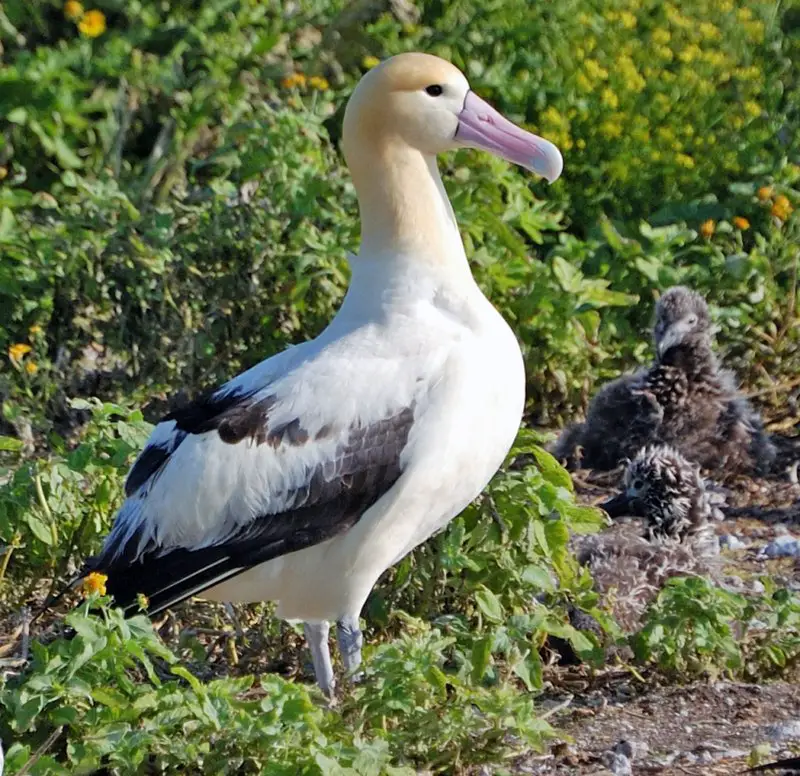
Albatrosses are majestic, large seabirds belonging to the Diomedeidae family in the Procellariiformes order.
These birds have an impressive wingspan and can fly great distances over oceans with minimal effort.
They inhabit all of the world’s southern oceans, ranging from Antarctica up through New Zealand and Australia as well as parts of the northern Pacific Ocean region.
Albatross populations were once abundant throughout much of their range but they now face threats such as longline fishing gear entanglement which has caused a significant decline in numbers in some areas.
Furthermore, occasional vagrants have been found outside their native ranges including fossil remains suggesting that albatrosses previously existed on other regions too.Scientific classification:
| Kingdom | Animalia |
| Phylum | Chordata |
| Class | Aves |
| Order | Procellariiformes |
| Family | Diomedeidae G.R. Gray 1840[1] |
Also Featured In: New Zealand Birds, Birds of Symbolism
17. Masked Booby
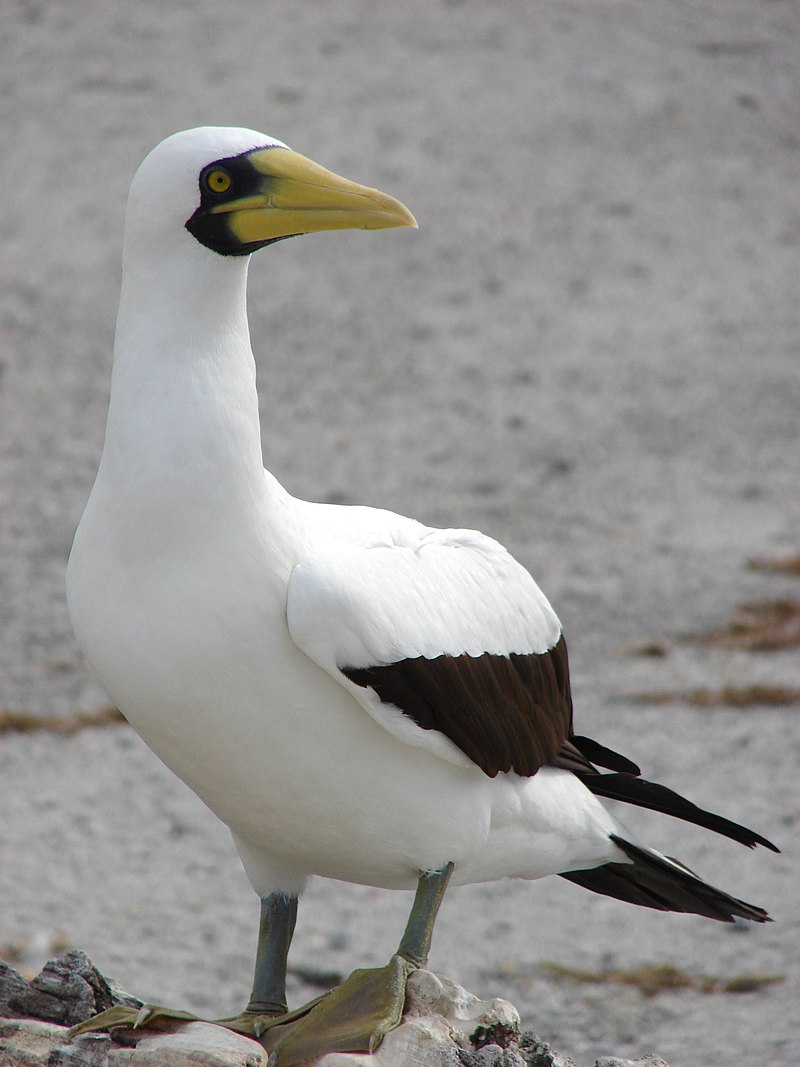
The Masked Booby is a large seabird belonging to the booby and gannet family. It was first described by French naturalist René-Primevère Lesson in 1831, making it one of six species of boobies within its genus Sula.
It has an impressive aerodynamic body shape with pale grey or white plumage on its head and neck, while the rest of its body is blackish brown.
Its wingspan can reach up to 1 metre wide. The bill is yellowish and pointed at the end, whilst they have bright blue skin around their eyes – this is why they are also known as ‘blue-faced’ boobies.
They use their strong wings for soaring over oceans in search of fish which makes them excellent fishers who feed mainly on flying fish near tropical waters but can occasionally be found off coasts in temperate regions too.Scientific classification:
| Kingdom | Animalia |
| Phylum | Chordata |
| Class | Aves |
| Order | Suliformes |
| Family | Sulidae |
| Genus | Sula |
| Species | S. dactylatra |
Also Featured In: Mauritius birds, Caribbean Birds
18. Lesser Frigatebird
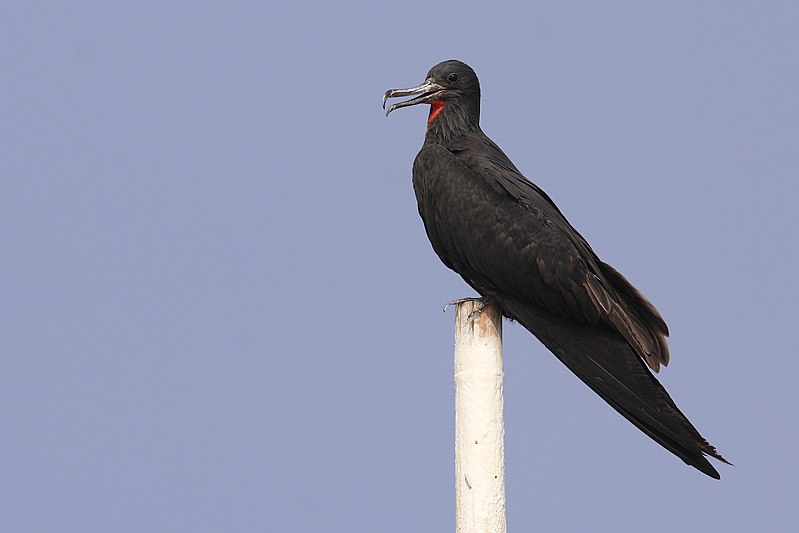
The Lesser Frigatebird is a seabird of the Fregatidae family and is known to be the smallest species in this group. It has brownish-black plumage, long narrow wings, and a forked tail.
This bird inhabits tropical and subtropical regions across the Indian Ocean, Pacific Ocean as well as off Brazil’s Atlantic Coast.
It feeds on fish taken from surface water or by plunge diving while flying low over shallow waters.
Its primary breeding grounds are located around islands with steep cliffs where it builds its nests out of twigs and grasses high up near ledges or crevices.
The lesser frigatebird can live for about 25 years due to their strong aerodynamic abilities which allow them to glide through air currents effortlessly thus conserving energy during flights that last days at a time.Scientific classification:
| Kingdom | Animalia |
| Phylum | Chordata |
| Class | Aves |
| Order | Suliformes |
| Family | Fregatidae |
| Genus | Fregata |
| Species | F. ariel |
Also Featured In: Birds that Live in Tahiti Island, Birds of Karnataka
19. Red-Tailed Tropicbird
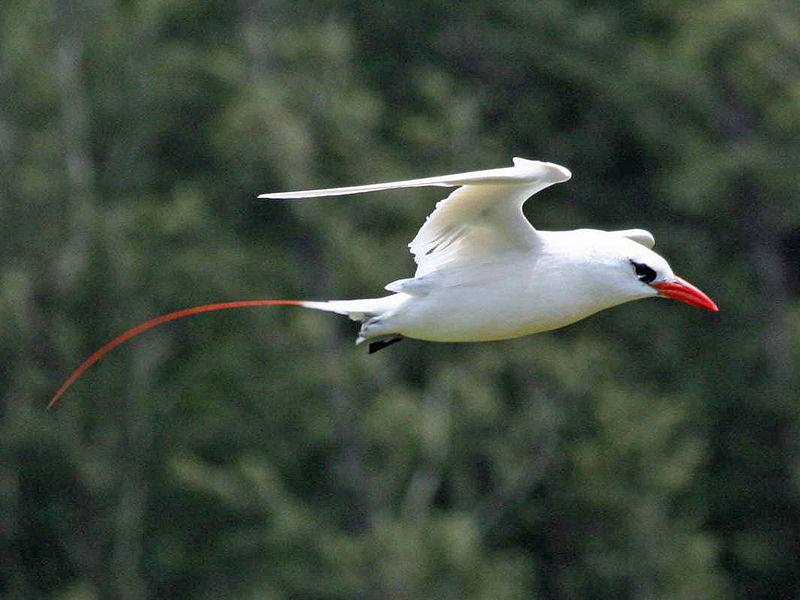
The Red-tailed Tropicbird is an exotic seabird found in tropical areas of the Indian and Pacific Oceans. It has a striking appearance, with mostly white feathers and a black mask covering its eyes.
Its bill is bright red, making it stand out against its pale plumage. Both males and females have similar looks to one another – unlike many other birds species where the male looks significantly different from that of the female.
Described by Pieter Boddaert in 1783, this impressive bird can be seen soaring through tropical skies looking for food either alone or within small flocks made up of several individuals at once.Scientific classification:
| Kingdom | Animalia |
| Phylum | Chordata |
| Class | Aves |
| Order | Phaethontiformes |
| Family | Phaethontidae |
| Genus | Phaethon |
| Species | P. rubricauda |
Also Featured In: Common Republic of Nauru Birds, Birds that Live in Gold Coasts
20. Bulwer’s Petrel
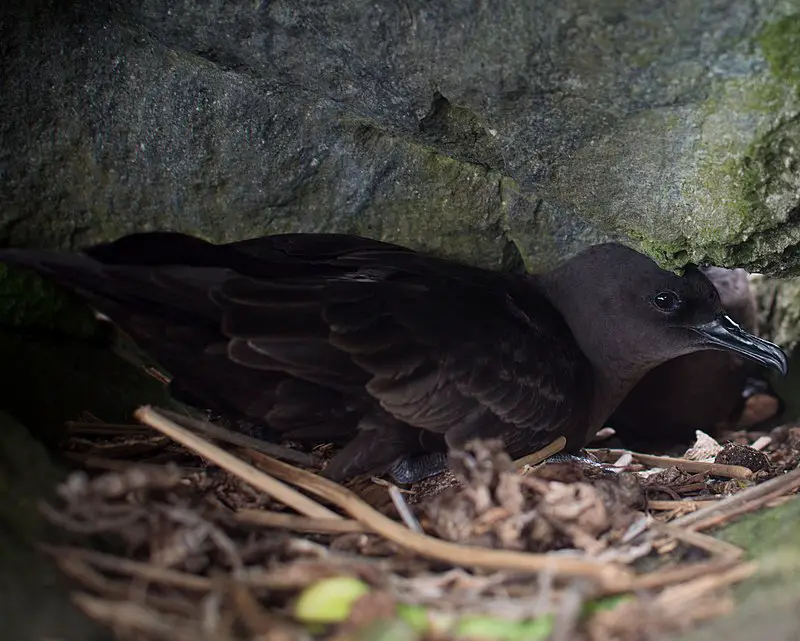
Bulwer’s petrel is a small seabird in the Procellariidae family which can be found across tropical and subtropical regions of the Atlantic, Indian and Pacific Oceans.
It was named after English naturalist James Bulwer who first described it in 1828 along with Jardine and Selby.
The bird has dark greyish plumage on its back while the underside is typically white or pale grey.
Its wings are short but broad making them ideal for soaring high above large bodies of water looking for food such as squid, fish, crustaceans and insects.
They use their long pointed bill to catch prey from both surface-skimming dives or underwater plunges up to 15 meters deep.
These birds nest burrows dug into soil cliffs where they lay just one egg each year which takes about 55 days to hatch.Scientific classification:
| Kingdom | Animalia |
| Phylum | Chordata |
| Class | Aves |
| Order | Procellariiformes |
| Family | Procellariidae |
| Genus | Bulweria |
| Species | B. bulwerii |
Also Featured In: Cabo Verde birds, Hong Kong Birds You Need to See
21. White-Faced Storm Petrel
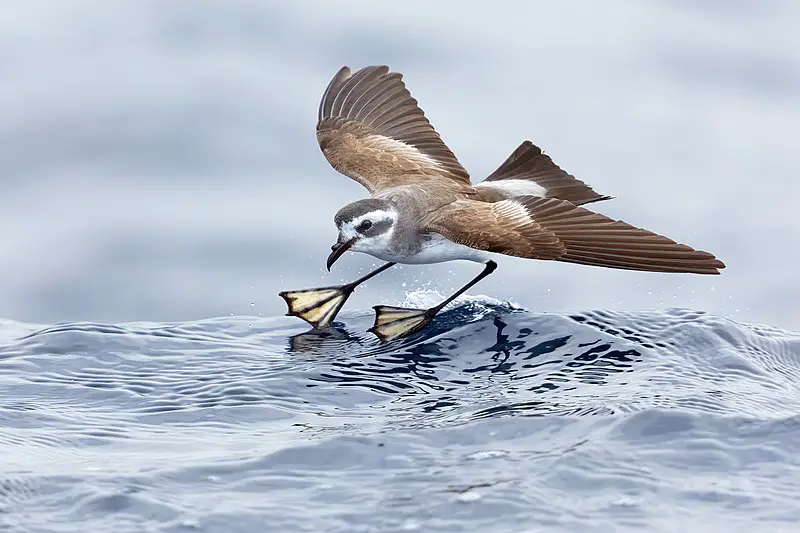
The White-faced Storm Petrel is a remarkable seabird belonging to the austral storm petrel family. It has a length of 19 to 21 centimetres and wingspan that ranges from 41 to 44 cm.
Its body is pale brown or grey, with blackish primaries in its wings and tail feathers.
The most distinctive feature is its white face which gives it an unmistakable appearance among other birds species.
These small, pelagic bird breed mainly on islands off New Zealand and Australia as well as Chile, Argentina, South Georgia and Tristan da Cunha Islands during summer season when they build their nests under rocks or burrows for laying eggs .
They feed by swimming underwater with their feet while searching for food like squid or fish near the surface of water.
In winter these birds migrate southwards where they spend time away from breeding grounds in order to survive cold weather conditions at higher latitudes.Scientific classification:
| Kingdom | Animalia |
| Phylum | Chordata |
| Class | Aves |
| Order | Procellariiformes |
| Family | Oceanitidae |
| Genus | Pelagodroma Reichenbach, 1853[2] |
| Species | P. marina |
Also Featured In: Birds That Live In Tristan da Cunha,
22. Red-Footed Booby
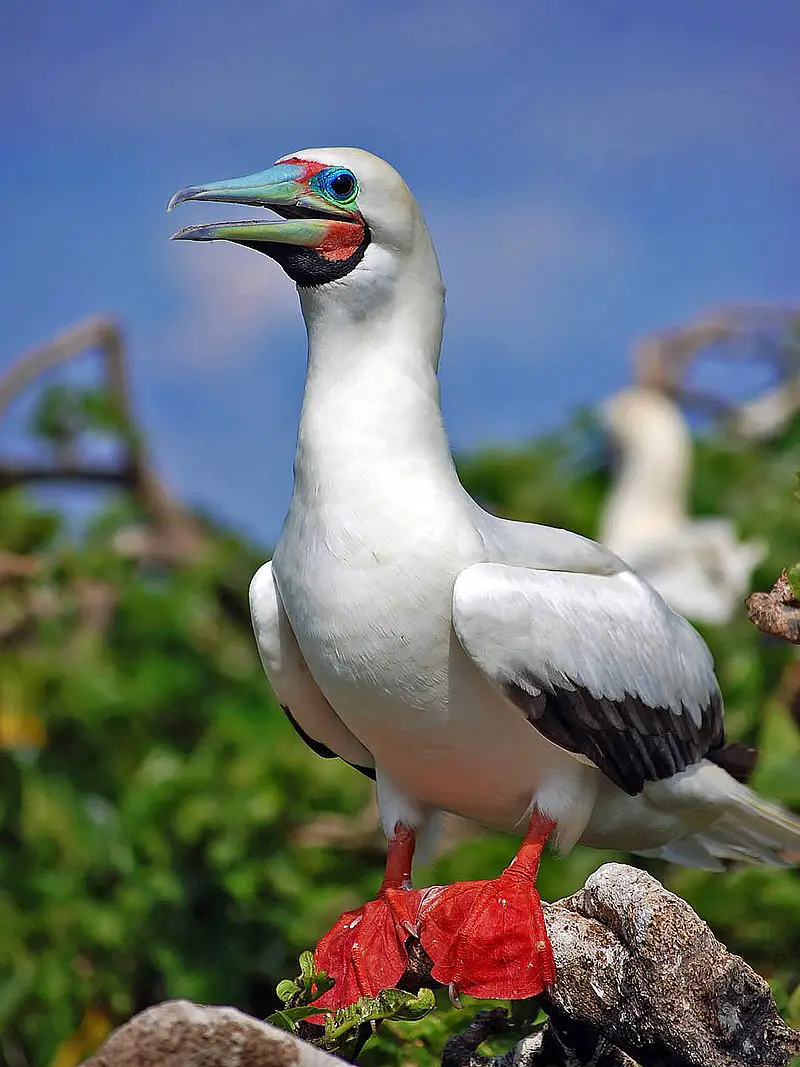
The Red-footed Booby is a large seabird of the Sulidae family, easily distinguished by its bright red feet. These birds are strong and agile fliers but can be clumsy in takeoffs and landings.
They live mostly in tropical areas and breed colonially on coastal islands all over the world.
The species faces few threats from either nature or humans, however their population has decreased slightly due to disturbances near breeding sites.
Despite this mild decline, they remain an incredibly common sight across many parts of the tropics – so much so that they have become symbolic with island life.Scientific classification:
| Kingdom | Animalia |
| Phylum | Chordata |
| Class | Aves |
| Order | Suliformes |
| Family | Sulidae |
| Genus | Sula |
| Species | S. sula |
Also Featured In: Birds of Kauai, Hawaii, White Oahu Birds
23. Atlantic Petrel
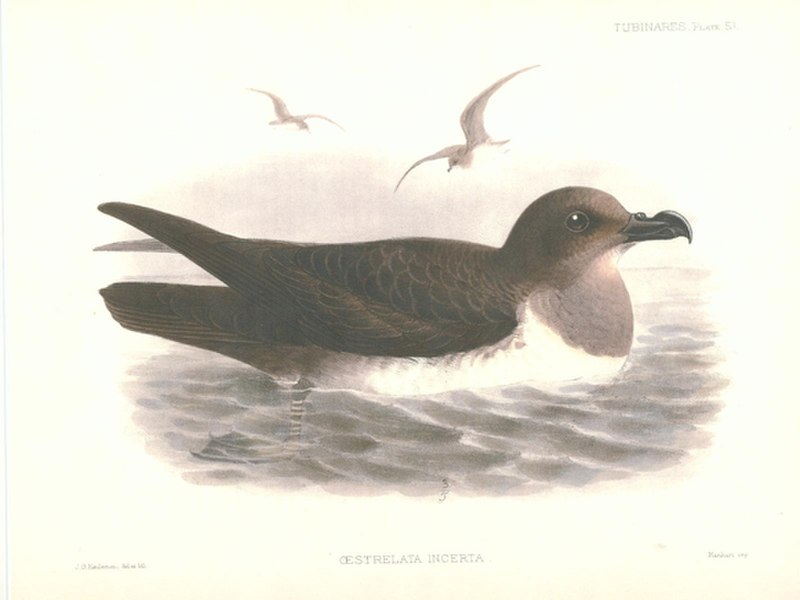
The Atlantic petrel is a large and stocky dark-colored seabird that can be found in the South Atlantic Ocean. It breeds in huge colonies on Tristan da Cunha and Gough Island, ranging from Brazil to Namibia at sea.
Most records of these birds exist to the west of their breeding islands along the subtropical convergence line.
Standing about 43 cm high, they are powerful flyers with white bellies and black wings tipped with white spots; underwings have an “M” pattern when viewed from above while flying overhead.
They prefer offshore waters over open ocean but will occasionally come to shore for rest or food during migration times as well as nesting season when it arrives.Scientific classification:
| Kingdom | Animalia |
| Phylum | Chordata |
| Class | Aves |
| Order | Procellariiformes |
| Family | Procellariidae |
| Genus | Pterodroma |
| Species | P. incerta |
Also Featured In: Gough Island Birds You Should Know, Ocean Island Birds You Didn’t Know
24. Northern Fulmar
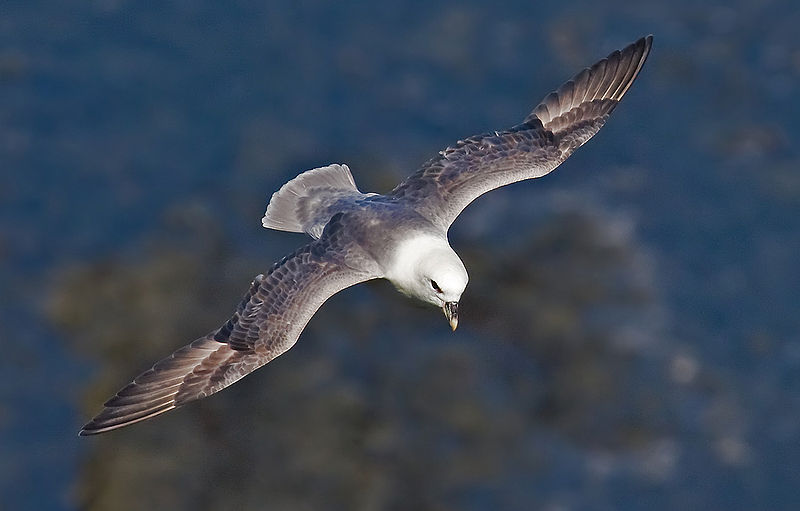
The Northern Fulmar is a seabird that resides in the subarctic regions of the North Atlantic and North Pacific oceans. It has one distinctive color morph: white head and body, along with gray wings.
This bird had been seen only once in Southern Hemisphere south from New Zealand due to its habitat preferences.
Its diet includes fish eggs, crustaceans, small squid and other marine animals which they consume while flying over water surface or when swimming on sea’s top layer looking for food.
The Fulmar also scavenges carrion, especially during breeding season as their chicks need more nutrition than adult birds do.
They are highly abundant species so no conservation measures have been taken yet but monitoring them helps us understand population dynamics better.Scientific classification:
| Kingdom | Animalia |
| Phylum | Chordata |
| Class | Aves |
| Order | Procellariiformes |
| Family | Procellariidae |
| Genus | Fulmarus |
| Species | F. glacialis |
Also Featured In: Iceland birds, Birds that Live in Svalbard
25. Razorbill
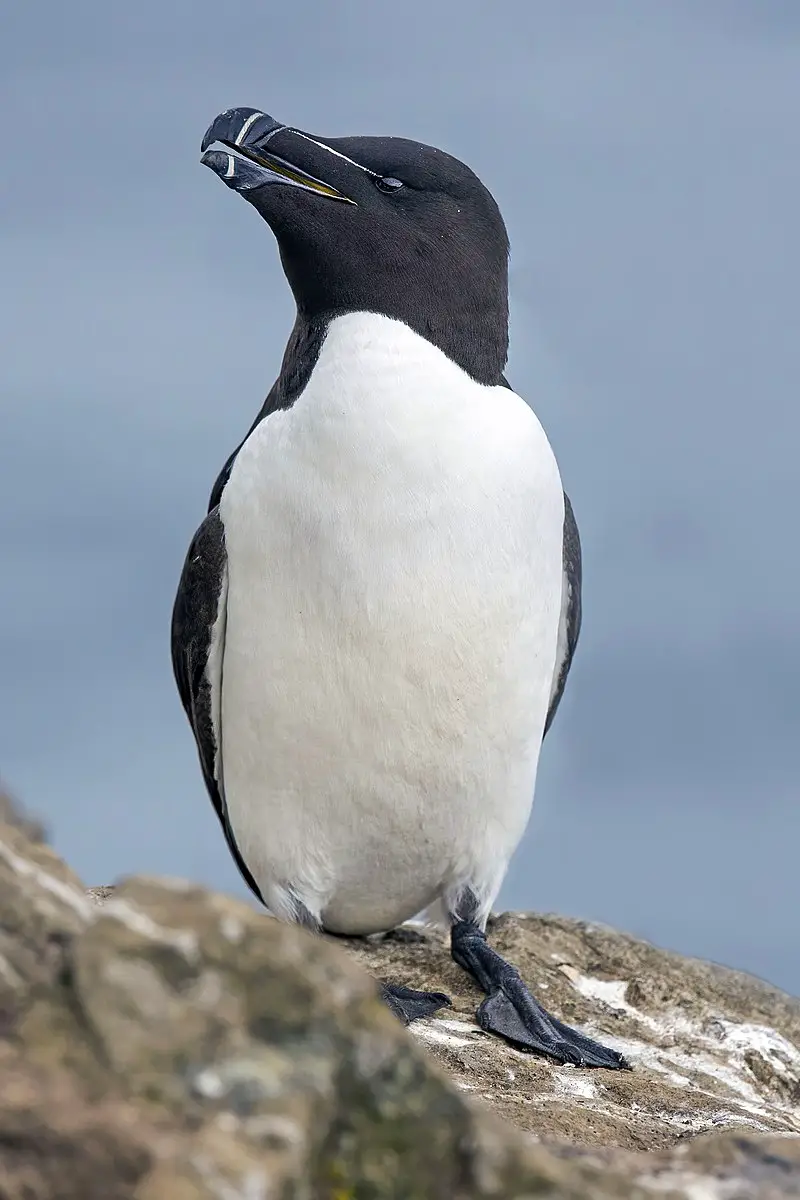
The Razorbill is a seabird of the family Alcidae and is closely related to the extinct great auk. It lives in subarctic waters of the Atlantic Ocean, primarily black with white underside and both male and female look identical.
They have long pointed wings which help them dive underwater for their food that consists mainly of fish and crustaceans.
Usually they form large colonies on cliffs or rocky islands but can also be found solitary during breeding season when pairs nest together in crevices or rock ledges near sea level.
During winter they migrate southwards into open water areas where they stay until spring arrives again before returning back to breed once more.
The razorbill’s population has been declining due to human activity such as overfishing so conservation efforts are being made by governments across Europe in order to protect this species from extinction.Scientific classification:
| Kingdom | Animalia |
| Phylum | Chordata |
| Class | Aves |
| Order | Charadriiformes |
| Family | Alcidae |
| Genus | Alca |
| Species | A. torda |
Also Featured In: Shetland Islands Birds You Should Know, Black And White Birds You Don’t Know About
26. Wedge-Tailed Shearwater
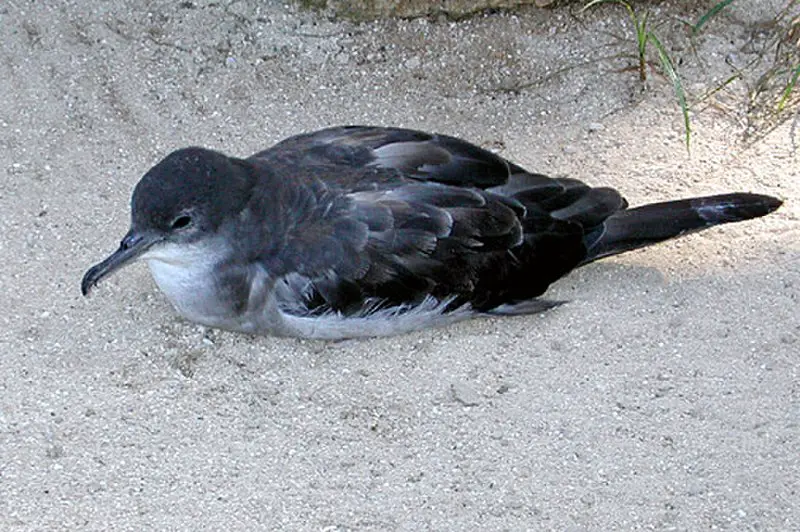
The wedge-tailed shearwater is a medium-large seabird found in the tropical Pacific and Indian Oceans. It is one of several species referred to as muttonbirds, along with the sooty and short-tailed shearwaters.
These birds have long wings that allow them to soar for extended periods over large bodies of water while searching for food such as fish, squid, crustaceans, cephalopods and other marine invertebrates.
During mating season they nest on islands or small sandy beaches where both parents take turns caring for their chicks until they fledge at around two months old.
Wedge-taileds are an important part of many island cultures who traditionally hunt these birds during certain times of year when populations peak due to migration patterns.Scientific classification:
| Kingdom | Animalia |
| Phylum | Chordata |
| Class | Aves |
| Order | Procellariiformes |
| Family | Procellariidae |
| Genus | Ardenna |
| Species | A. pacifica |
Also Featured In: Seychelles birds, Welcome Islands Birds You Need To Know
27. Penguins
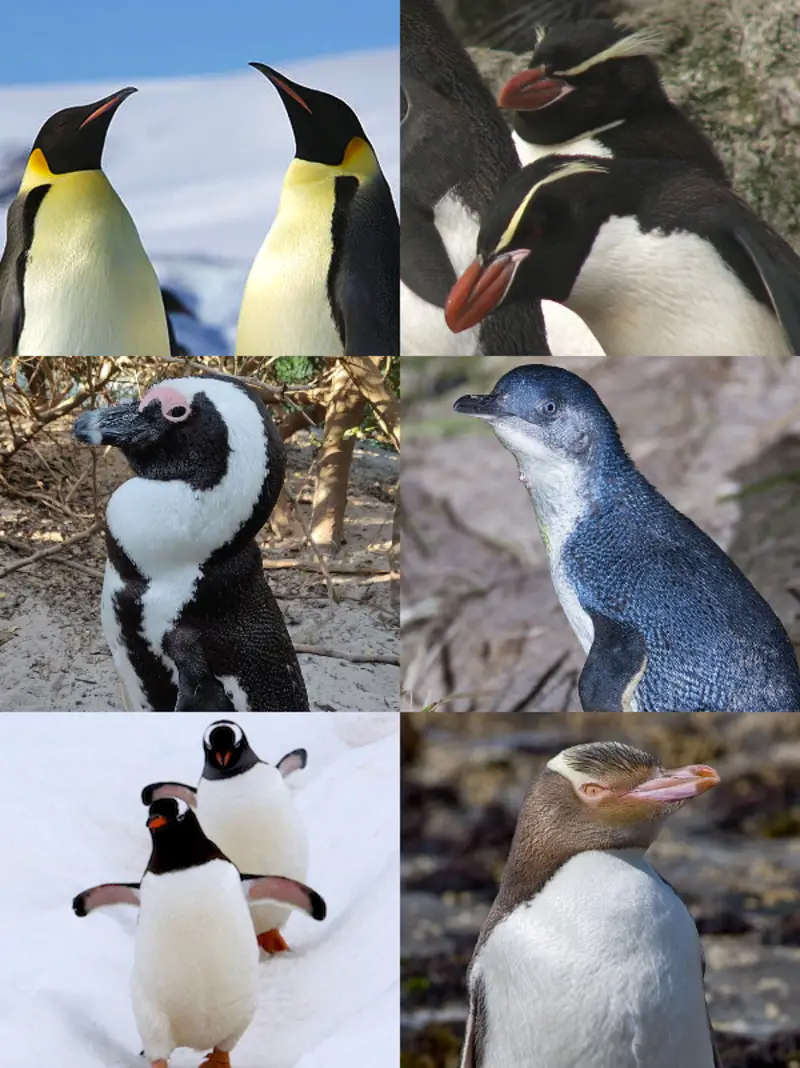
Penguins are an amazing species of aquatic birds that live mainly in the Southern Hemisphere. They have a unique plumage, which is black and white countershaded to aid them while swimming in the water.
Penguins feed mostly on krill, small crustaceans found near Antarctica. These remarkable creatures can’t fly but they compensate by being excellent swimmers due to their flippers-like wings which help them move faster underwater.
All this makes penguins one of nature’s most fascinating animals – not just for kids.Scientific classification:
| Kingdom | Animalia |
| Phylum | Chordata |
| Class | Aves |
| Clade | Austrodyptornithes |
| Order | Sphenisciformes Sharpe, 1891 |
| Family | Spheniscidae Bonaparte, 1831 |
Also Featured In: Antarctica Birds, Common Carnivore Birds
28. Wandering Albatross
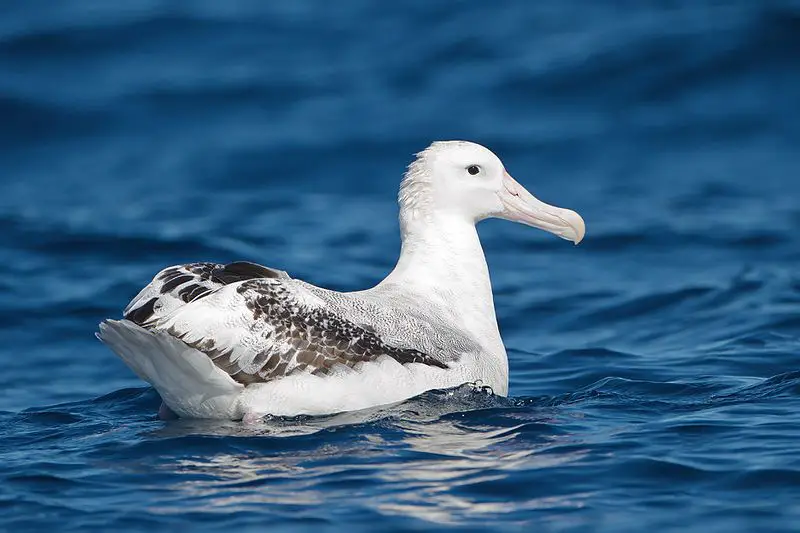
The Wandering Albatross is a large seabird from the family Diomedeidae found in the Southern Ocean. It has white wings, black tips and a long hooked bill.
With its impressive wingspan of up to 3m they are one of largest birds that can fly.
They spend most their lives far out at sea only coming to land for breeding season on remote islands where they nest on cliffs or rocky areas close by the ocean.
The species was first described in 1783 but had been considered similar to other albatrosses such as Tristan Albatross and Antipodean Albatross until recently when it was recognized as an individual species due to genetic studies showing differences between them.Scientific classification:
| Kingdom | Animalia |
| Phylum | Chordata |
| Class | Aves |
| Order | Procellariiformes |
| Family | Diomedeidae |
| Genus | Diomedea |
| Species | D. exulans |
Also Featured In: Flight Birds You Should Know, Patagonia Birds You Should Know
29. Emperor Penguin
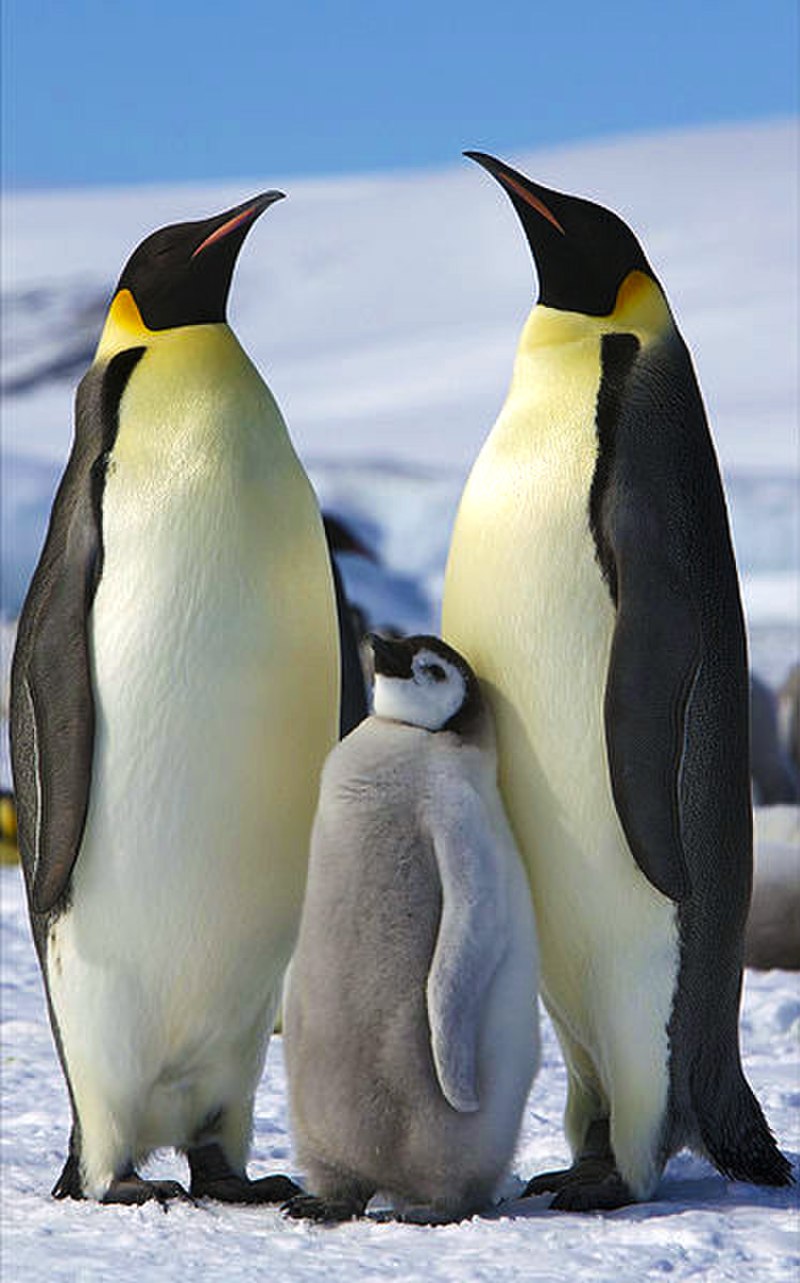
The Emperor penguin is an amazing bird – the tallest and heaviest of all living penguins. It has a unique plumage with black head and back feathers sharply contrasted against its white belly, pale-yellow breast, and bright-yellow ear patches.
Reaching up to 100 cm in length and weighing between 22–45 kg, it’s truly a sight to behold.
The Emperor Penguin is endemic to Antarctica where they feed on krill fish or squid depending on the season. Breeding occurs during the harsh winter months when temperatures can drop as low as −40 °C (−40 °F).
Despite this extreme climate their remarkable adaptations allow them to survive in these unforgiving conditions – making them one of nature’s true marvels.Scientific classification:
| Kingdom | Animalia |
| Phylum | Chordata |
| Class | Aves |
| Order | Sphenisciformes |
| Family | Spheniscidae |
| Genus | Aptenodytes |
| Species | A. forsteri |
30. Black-Browed Albatross
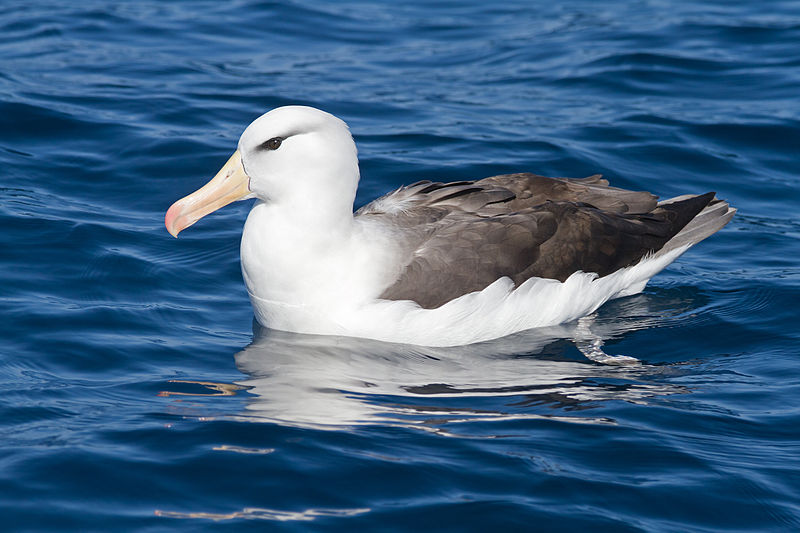
The Black-browed Albatross is a majestic seabird that belongs to the albatross family known as Diomedeidae.
It is an impressive bird, with its black beak and brow contrasting against white plumage on its wings and body.
The most widespread and common member of this group, it can often be seen flying around oceans in different parts of the world.
These birds share many features with other members of their order Procellariiformes, such as shearwaters, fulmars, storm petrels and diving petrels; they all have long wingspans for gliding effortlessly above water surfaces.
They feed mainly by scavenging or hunting small fish near sea surface while flying low over waters.
Its population has unfortunately declined due to commercial fishing vessels which attract them closer to shore resulting in entanglement into fishing nets leading them towards mortality.Scientific classification:
| Kingdom | Animalia |
| Phylum | Chordata |
| Class | Aves |
| Order | Procellariiformes |
| Family | Diomedeidae |
| Genus | Thalassarche |
| Species | T. melanophris |
Also Featured In: Black Birds in New Zealand, South Shetland Islands Birds You Need To Know
31. Cape Petrel
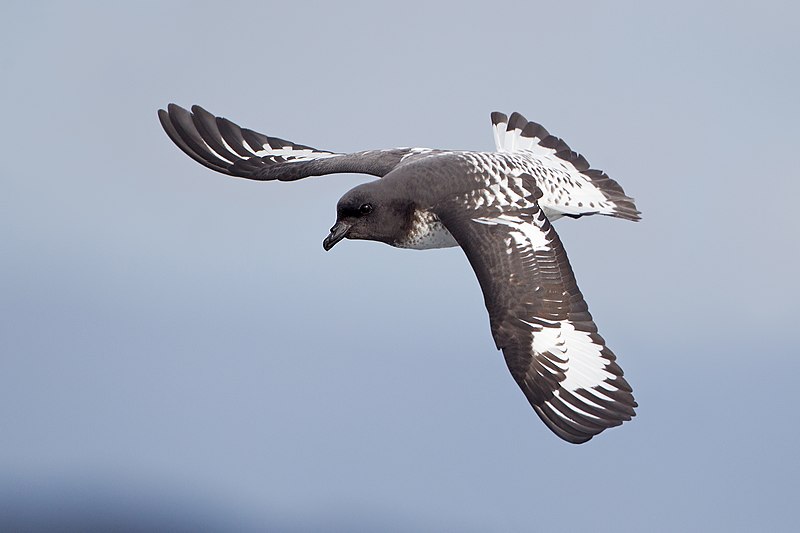
The Cape petrel is a seabird from the Procellariidae family that lives in the Southern Ocean. It is the only species of its genus and has many allies, including fulmarine petrels and giant petrels.
This species is abundant with an estimated population of around two million individuals. Its plumage consists mainly of dark grey on top and white underneath, making it easily identifiable when flying overhead or perched atop rocks along shorelines.
They usually feed at night while searching for fish, crustaceans, squid and other marine life near surface waters using their strong sense of smell to find prey in low light conditions.
Cape Petrels are often seen gathering into large flocks as they migrate between Antarctic seas during winter months before returning home to breed during summertime where they form large colonies along coastlines throughout southern oceans such as New Zealand’s South Island coasts.Scientific classification:
| Kingdom | Animalia |
| Phylum | Chordata |
| Class | Aves |
| Order | Procellariiformes |
| Family | Procellariidae |
| Genus | Daption Stephens, 1826 |
| Species | D. capense |
Also Featured In: Common Birds of Weddell Island, Beautiful Birds Found in Central Islands
32. Black Noddy
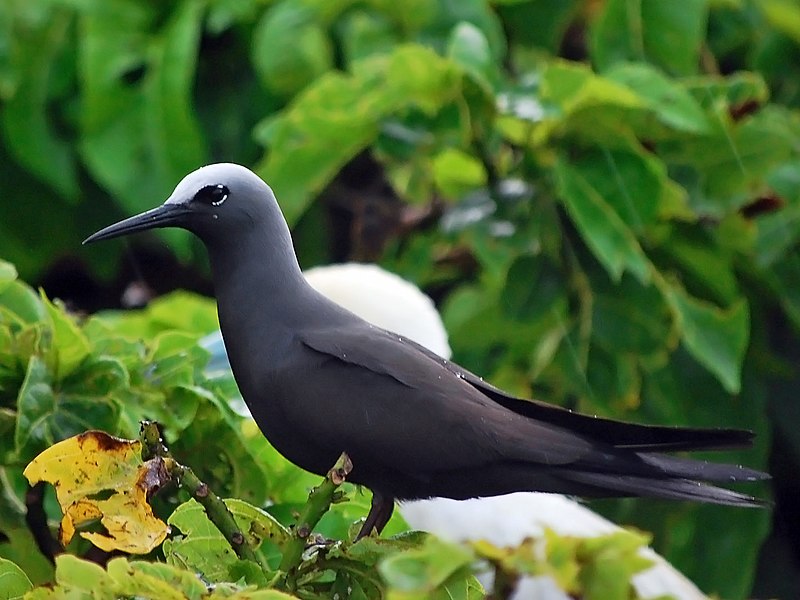
The Black Noddy bird is a medium-sized member of the Laridae family, identifiable by its black plumage and white cap.
It closely resembles the Lesser Noddy but has slightly darker feathers with dark lores instead of pale ones.
The species was first formally described in 1758, although it was previously considered to be part of Anous tenuirostris before being identified as a separate species.
They are usually found near tropical oceans or islands where they forage for food such as crustaceans, mollusks and insects during the day.
At night, they roost on trees or shrubs close to shorelines while avoiding larger predators like sea eagles.
During breeding season females lay single eggs which both parents protect until hatching takes place around four weeks later.Scientific classification:
| Kingdom | Animalia |
| Phylum | Chordata |
| Class | Aves |
| Order | Charadriiformes |
| Family | Laridae |
| Genus | Anous |
| Species | A. minutus |
Also Featured In: Cook Islands birds, Birds You’ll Find in the Marshall Islands
33. Buller’s Shearwater
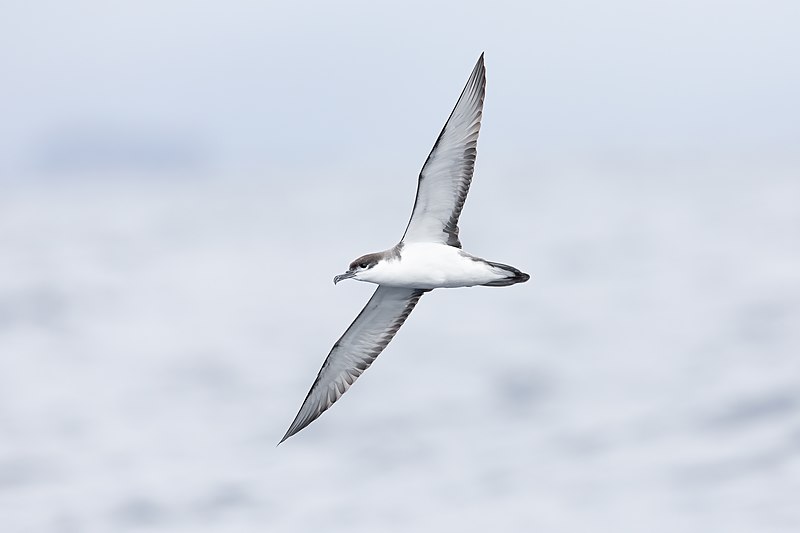
Buller’s shearwater is a species of seabird found in the Pacific Ocean. It belongs to the Procellariidae family, and is also known as grey-backed or New Zealand shearwater.
This bird has an impressive size – adults reach up to 46–47 cm (18–19 inches). Buller’s Shearwaters are members of the Thyellodroma group which includes large-sized birds from Ardenna genus.
In fact, they form a superspecies with wedge-tailed shearwater (A pacificus).
They can be seen near coasts during breeding season when they come ashore for nesting purposes; but otherwise spend most time at sea searching for prey such as fish, squid and crustaceans.Scientific classification:
| Kingdom | Animalia |
| Phylum | Chordata |
| Class | Aves |
| Order | Procellariiformes |
| Family | Procellariidae |
| Genus | Ardenna |
| Species | A. bulleri |
Also Featured In: Most Common Birds in Stewart Island,
34. Tufted Puffin
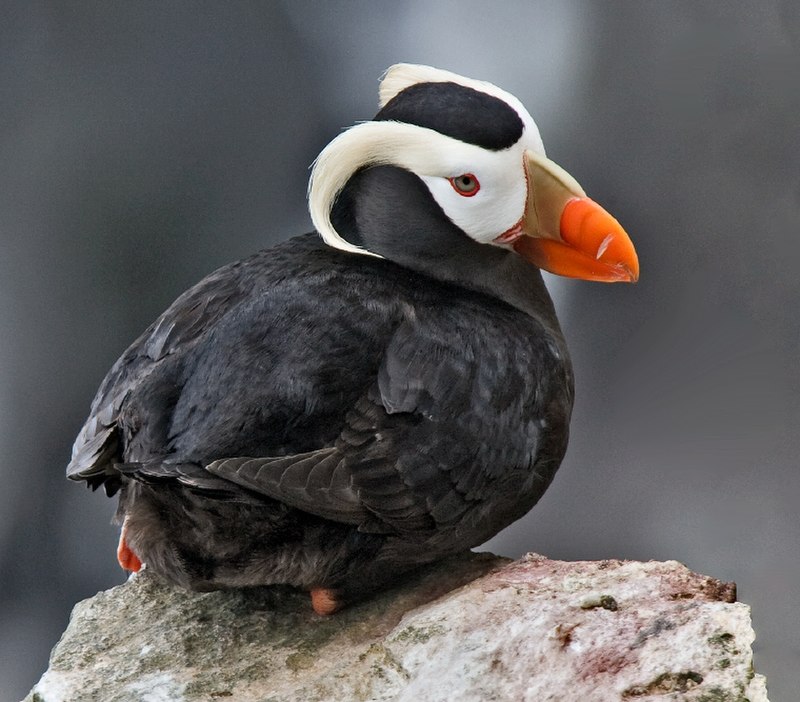
The Tufted Puffin is a medium-sized seabird belonging to the Alcidae family. It can be recognized by its thick red bill and yellow tufts, which give it an unmistakable appearance.
These birds inhabit the North Pacific Ocean and are relatively abundant compared to other species of puffin.
They measure around 35 cm in length with a similar wingspan, making them one of the smaller members of their genus Fratercula.
In terms of feeding habits they mainly eat small fish like herring or anchovies while at sea but also take advantage of food sources near shore when breeding season arrives.
Their eggs are laid in burrows that these feathered creatures dig into cliff faces for protection from predators; once hatched both parents help raise their young until they fledge later on in life.Scientific classification:
| Kingdom | Animalia |
| Phylum | Chordata |
| Class | Aves |
| Order | Charadriiformes |
| Family | Alcidae |
| Genus | Fratercula |
| Species | F. cirrhata |
Also Featured In: Auks Species, Birds You’ll Find in the Sea
35. Horned Puffin
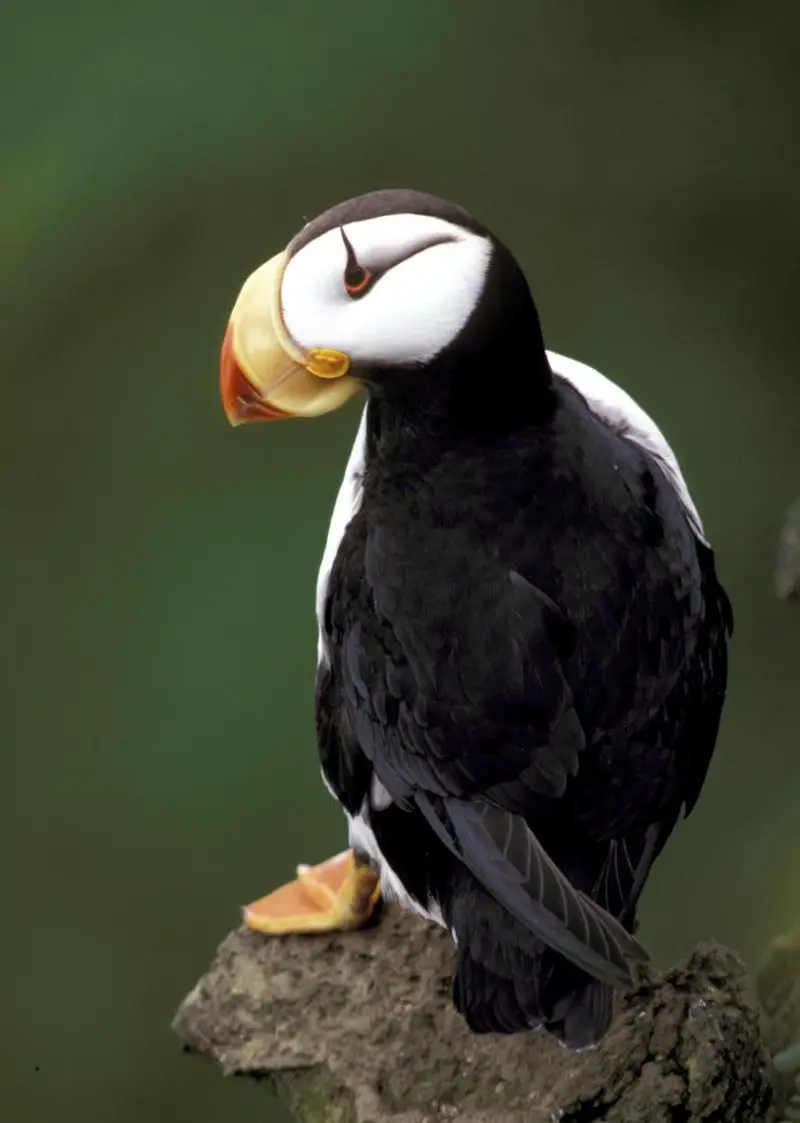
The Horned Puffin is an auk found in the North Pacific Ocean. It has striking black and white plumage, with its most distinctive feature being a “horn” of black skin located above each eye.
This species feeds mainly by diving for fish but also eats crustaceans and mollusks. They nest in colonies, often mixed with other auks such as murres or guillemots.
Despite their small size (around 30 cm long) they are strong fliers and can travel large distances across open oceans when searching for food.
The Horned Puffin is currently listed as Least Concern due to stable populations throughout its range although some declines have been noted from oil pollution and overfishing of prey species which could become concerning if not addressed soon enough.Scientific classification:
| Kingdom | Animalia |
| Phylum | Chordata |
| Class | Aves |
| Order | Charadriiformes |
| Family | Alcidae |
| Genus | Fratercula |
| Species | F. corniculata |
Also Featured In: Tundra Birds, Birds that Live near Bering Island
36. Western Gull
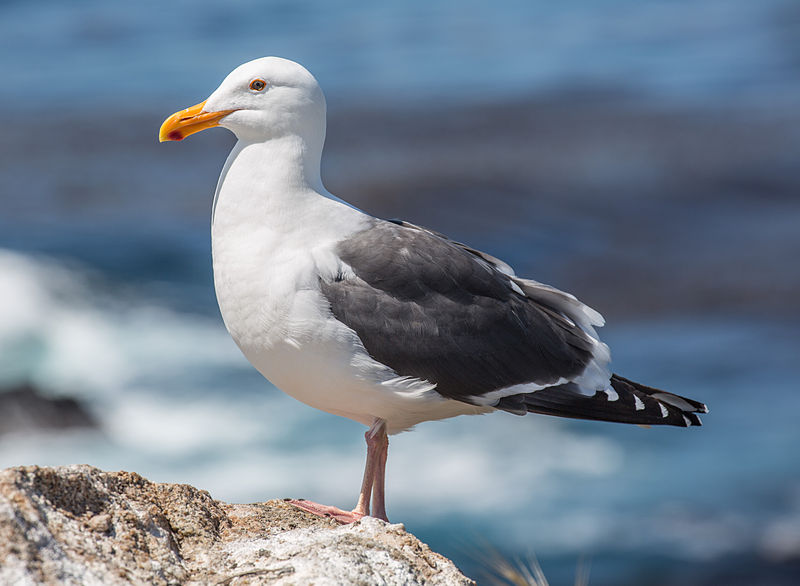
The Western Gull is a majestic seabird found on the West Coast of North America, ranging from British Columbia to Baja California. It has a large white head and stands between 22-27 inches in size.
Its upper parts are gray while its underparts range from brownish grey to white depending on age or sex of the bird.
The most distinguishing feature is its yellow feet which set it apart from other gulls in the area such as Larus livens.
These birds feed by scavenging for food including fish, mollusks, crustaceans and even carrion when available.
They also nest near ocean shores with their eggs hatching anywhere within 28 days after being laid. A beautiful sight to behold at any beach; these birds will surely captivate you with their grandeur.Scientific classification:
| Kingdom | Animalia |
| Phylum | Chordata |
| Class | Aves |
| Order | Charadriiformes |
| Family | Laridae |
| Genus | Larus |
| Species | L. occidentalis |
Also Featured In: Gulls Species, Common Southern Californian Birds
37. Laysan Albatross
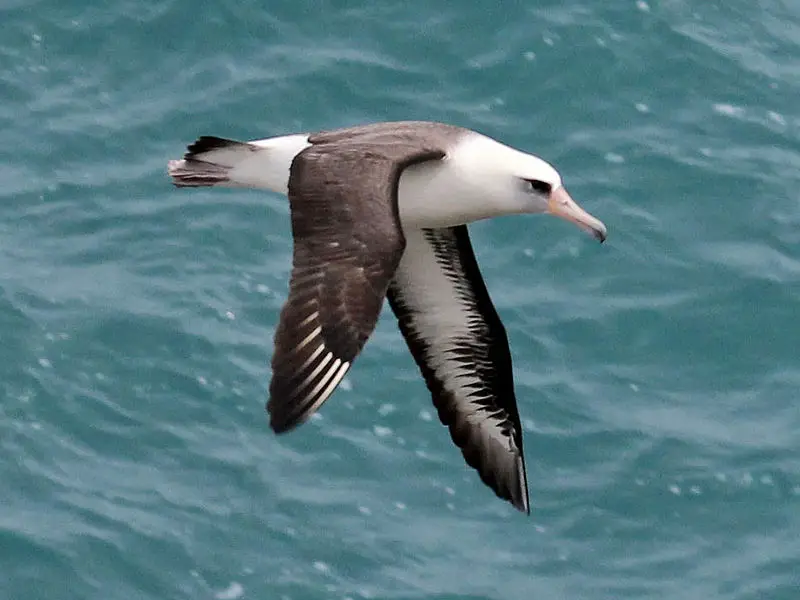
The Laysan albatross is a large seabird found in the North Pacific Ocean. Most of its population (99.7%) can be seen residing in the Northwestern Hawaiian Islands, where they form strong colonies and thrive among their natural habitat there.
They are small for an albatross but still have distinguishable features such as long wingspans that help them soar gracefully above oceans while searching for food over great distances with ease.
It’s estimated to have 1.18 million birds worldwide and continues to expand or re-expand its range throughout other areas of the oceanic region too.Scientific classification:
| Kingdom | Animalia |
| Phylum | Chordata |
| Class | Aves |
| Order | Procellariiformes |
| Family | Diomedeidae |
| Genus | Phoebastria |
| Species | P. immutabilis |
Also Featured In: Albatross Species, Most Common Oahu Birds
38. Black-Footed Albatross
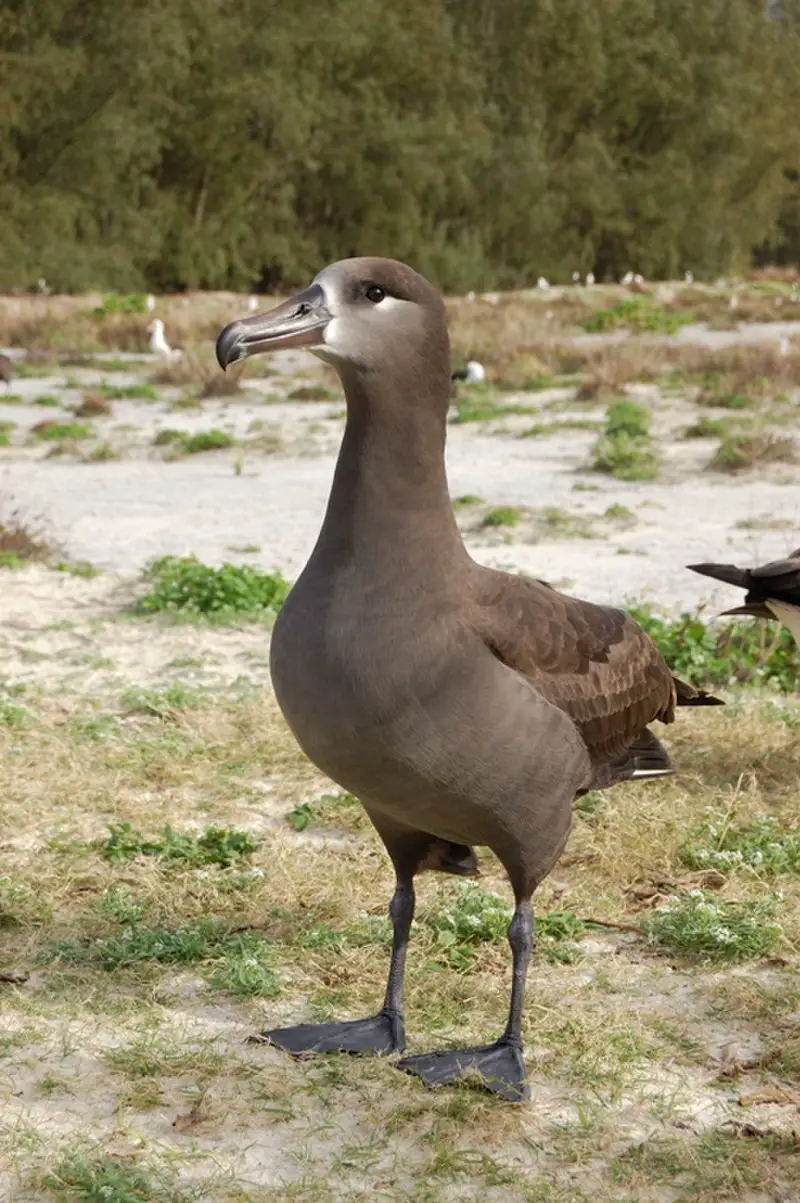
The black-footed albatross is a species of large seabird from the Diomedeidae family, found primarily in North Pacific coastal areas.
It is one of three species of northern hemisphere albatrosses and has dark plumage unlike many others.
These birds are mostly located around the Northwestern Hawaiian Islands where they nest on isolated tropical islands.
The population numbers have been rapidly declining due to human activities such as fishing nets and plastic waste consumption which affects their food sources.
Conservation efforts must be made to protect these majestic creatures before it’s too late.Scientific classification:
| Kingdom | Animalia |
| Phylum | Chordata |
| Class | Aves |
| Order | Procellariiformes |
| Family | Diomedeidae |
| Genus | Phoebastria |
| Species | P. nigripes |
Also Featured In: Most Common Birds of Farallon Islands, Native Birds Of Kure Atoll
39. Australasian Gannet
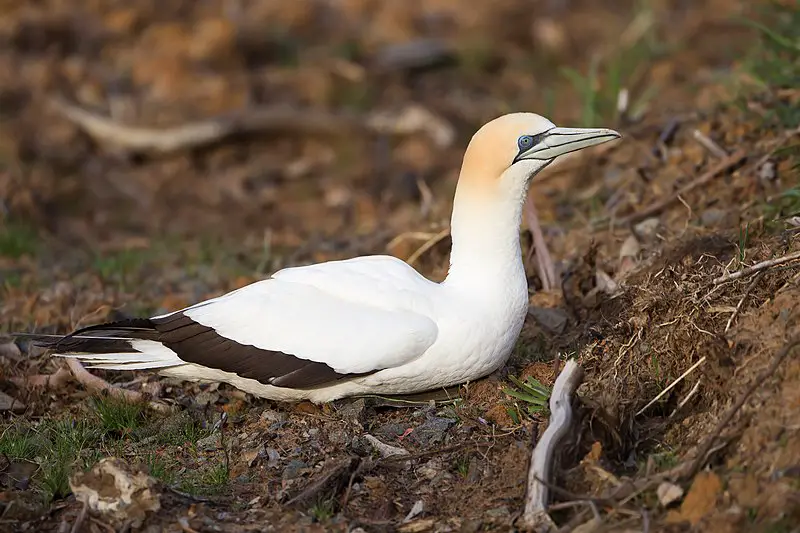
The Australasian gannet is a beautiful seabird with white feathers and black flight feathers that line its wings. Its head has a buff-yellow hue, with blue-grey bill edged in black and bright blue eyes.
It belongs to the booby and gannet family of Sulidae birds. This bird can be found off the coasts of Australia and New Zealand as well as other nearby islands including Lord Howe Island, Norfolk Island, Kangaroo Island, Tasmania South Australia’s Fleurieu Peninsula etc.
As they are excellent swimmers they feed on fish at sea by plunging into water from great heights or near surface swimming along shoals of small fishes in shallow waters.
The name “gannet” comes from an old English word for “gans” meaning goose-like bird because it looks like one when flying high above the ocean but dives down gracefully while hunting fish underwater.Scientific classification:
| Kingdom | Animalia |
| Phylum | Chordata |
| Class | Aves |
| Order | Suliformes |
| Family | Sulidae |
| Genus | Morus |
| Species | M. serrator |
Also Featured In: Booby Species, Birds that You’ll find in Perth
40. Double-Crested Cormorant

The double-crested cormorant is a majestic bird with an impressive wingspan, found across North America from the Aleutian Islands all the way down to Mexico.
Its black plumage stands out against its bright orange-yellow facial skin and some extended patches of white feathers on each side of its throat.
It measures between 28 – 35 inches in length and has webbed feet that enable it to swim gracefully through rivers and lakes, as well as coastal areas.
These birds are known for their voracious appetite for fish, sometimes diving over 100 ft deep into water looking for food.
Despite this reputation they also feed on crustaceans, amphibians and insects when available.
Cormorants have been part of many cultures throughout history due to their remarkable ability to fly long distances making them valued messengers or companions during fishing expeditions at sea.Scientific classification:
| Kingdom | Animalia |
| Phylum | Chordata |
| Class | Aves |
| Order | Suliformes |
| Family | Phalacrocoracidae |
| Genus | Nannopterum |
| Species | N. auritum |
Also Featured In: Cormorant Species, Water Birds Live around Us
41. Sternidae
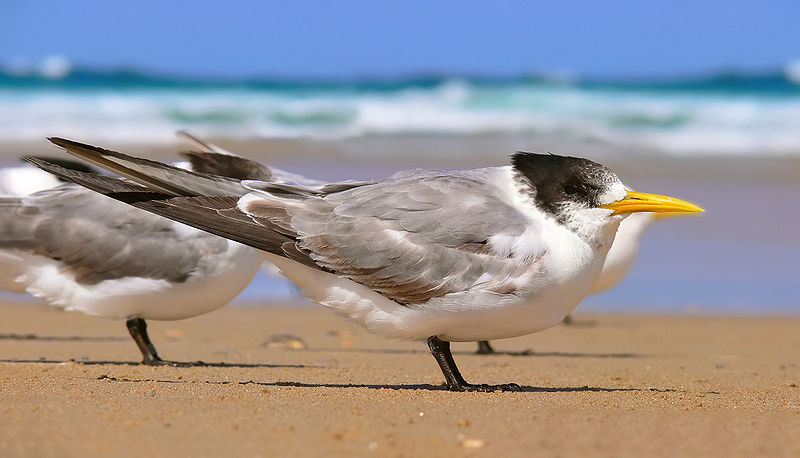
Sternidae are a subgroup of the family Laridae, consisting of eleven genera. They have slender bodies with long forked tails and narrow wings. Their bills are long and their legs relatively short.
Most species display pale grey or white plumage above, while underneath they show black markings on the head along with varying shades of browns elsewhere on their body.
These seabirds can be found in coastal areas near oceans, rivers and wetlands worldwide but especially in North America where they feed primarily on small fish which they capture by swooping down from the air to snatch them up from below the surface.
They also supplement this diet with crustaceans such as crabs when available.Scientific classification:
| Kingdom | Animalia |
| Phylum | Chordata |
| Class | Aves |
| Order | Charadriiformes |
| Family | Laridae |
| Subfamily | Sterninae Bonaparte, 1838 |
Also Featured In: Florida Birds, Flocks Birds around Us
42. Gannets
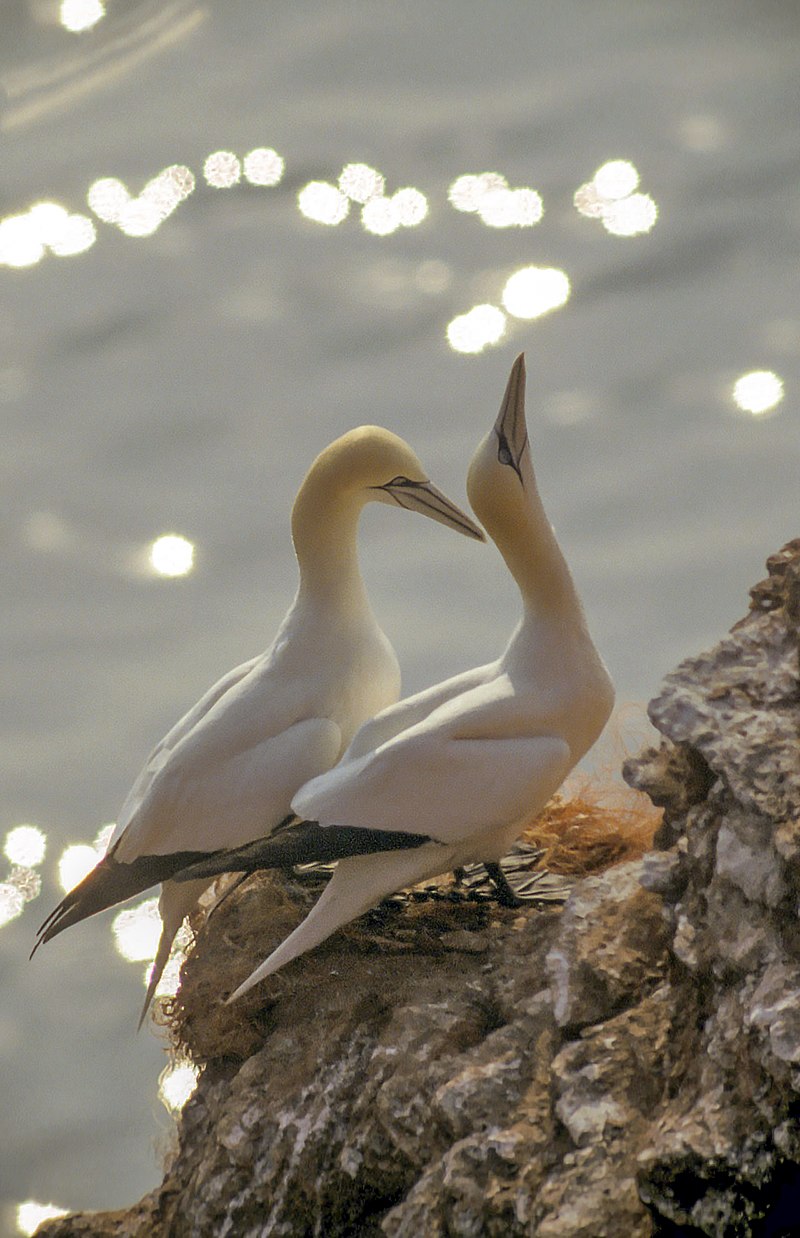
Gannets are marine birds that belong to the family Sulidae and are closely related to boobies. These large white birds have black-tipped wings, yellowish heads, and long bills.
With a wingspan of up to 6 1/2 feet, Northern gannets are the largest seabirds in the North Atlantic.
There are three species of gannets, with the other two found in the temperate seas of southern Africa and southern Australia.
Gannets are known for their spectacular diving abilities, plunging into the water at high speeds to catch fish.
They are also social birds, nesting in large colonies where they engage in courtship displays and territorial behaviors.
Overall, gannets are fascinating and impressive birds that play an important role in the marine ecosystem.Scientific classification:
| Kingdom | Animalia |
| Phylum | Chordata |
| Class | Aves |
| Order | Suliformes |
| Family | Sulidae |
| Genus | Morus Vieillot, 1816 |
Also Featured In: Common Cornwall Birds, Birds that Live in Faroe Islands
43. Aethia
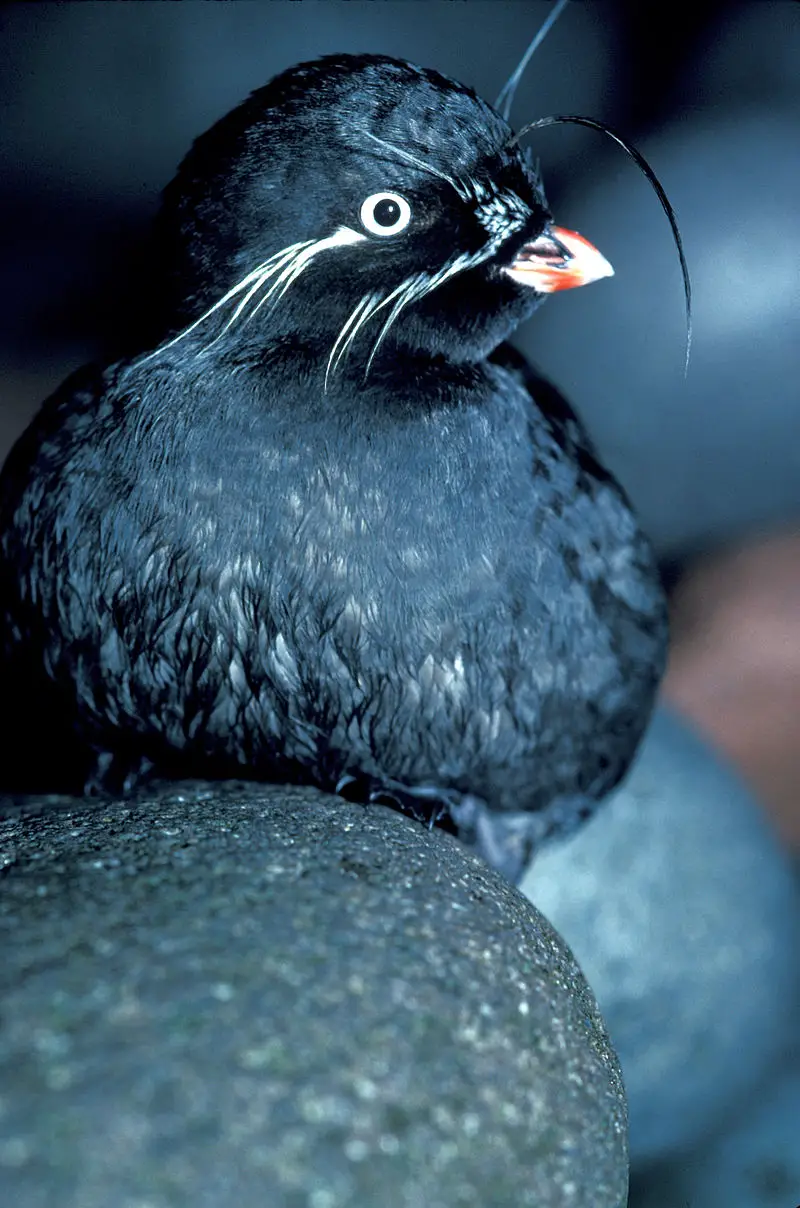
The Aethia bird genus consists of four small species that can be found in the North Pacific Ocean, Bering Sea, and Sea of Okhotsk.
These auklets are prized for their cuteness and are considered some of the most common seabirds in North America.
Unfortunately, the exact relationships between the four true auklets are still unknown. As much as these birds are loved, they are threatened by the presence of invasive species such as Arctic foxes and Norway rats.
These animals have a tendency to prey on birds, and Aethia birds are high on their list due to their colonial nature.
The Aethia bird is quite small, ranging from 85 to 300g, and is a joy to watch in its natural habitat.
Efforts are being made to protect the Aethia bird and ensure that these beautiful creatures can continue to thrive in their native environments.Scientific classification:
| Kingdom | Animalia |
| Phylum | Chordata |
| Class | Aves |
| Order | Charadriiformes |
| Family | Alcidae |
| Tribe | Aethiini |
| Genus | Aethia Merrem, 1788 |
44. Sooty Shearwater
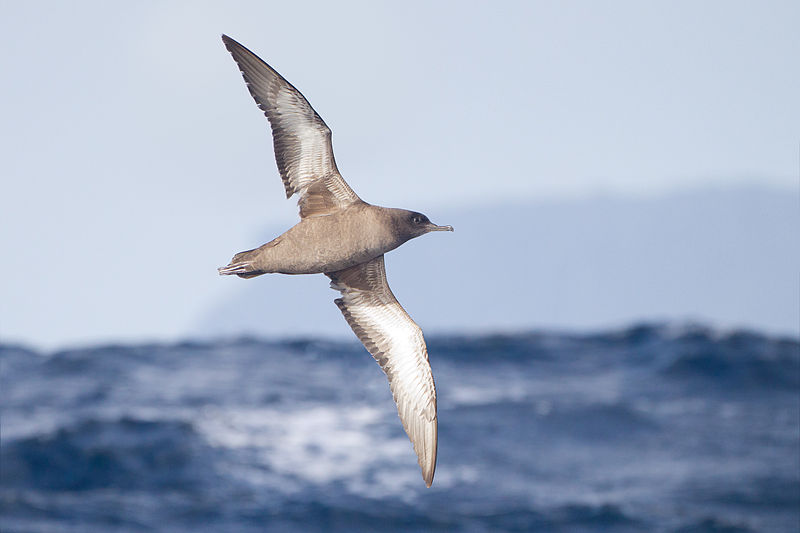
The sooty shearwater is a medium-large seabird in the Procellariidae family. It is also known as tītī in New Zealand and muttonbird, like its relatives.
Johann Friedrich formally described the bird in 1789.Scientific classification:
| Kingdom | Animalia |
| Phylum | Chordata |
| Class | Aves |
| Order | Procellariiformes |
| Family | Procellariidae |
| Genus | Ardenna |
| Species | A. grisea |
Also Featured In: Birds You’ll Find in Vancouver Island, Most Common Birds of Sierra Islands
45. Flesh-Footed Shearwater
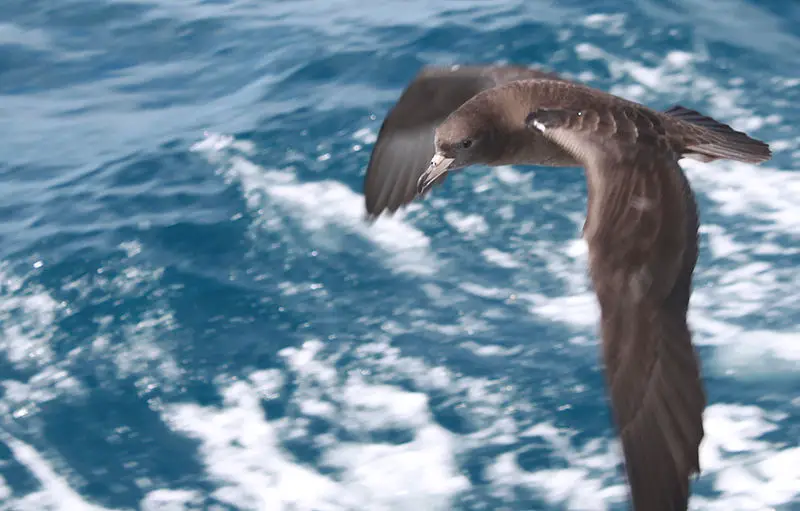
The Flesh-footed shearwater, also known as Ardenna carneipes, is a medium-sized bird with black plumage. It has pale pinkish feet and a pale bill with a distinct black tip.
The Flesh-footed shearwater is part of the Hemipuffinus group, alongside the pink-footed shearwater.
This group may or may not have a relative in the Atlantic called the great shearwater.
The Flesh-footed shearwater is a seabird that primarily feeds on fish and squid.
This species is known for its long-distance migration, as it travels from its breeding grounds in southern Australia to its feeding grounds in the eastern Pacific Ocean.
The Flesh-footed shearwater is vulnerable to multiple threats, including plastic pollution and bycatch in fishing gear.
Conservation efforts are underway to protect this species and its breeding colonies.Scientific classification:
| Kingdom | Animalia |
| Phylum | Chordata |
| Class | Aves |
| Order | Procellariiformes |
| Family | Procellariidae |
| Genus | Ardenna |
| Species | A. carneipes |
46. African Penguin
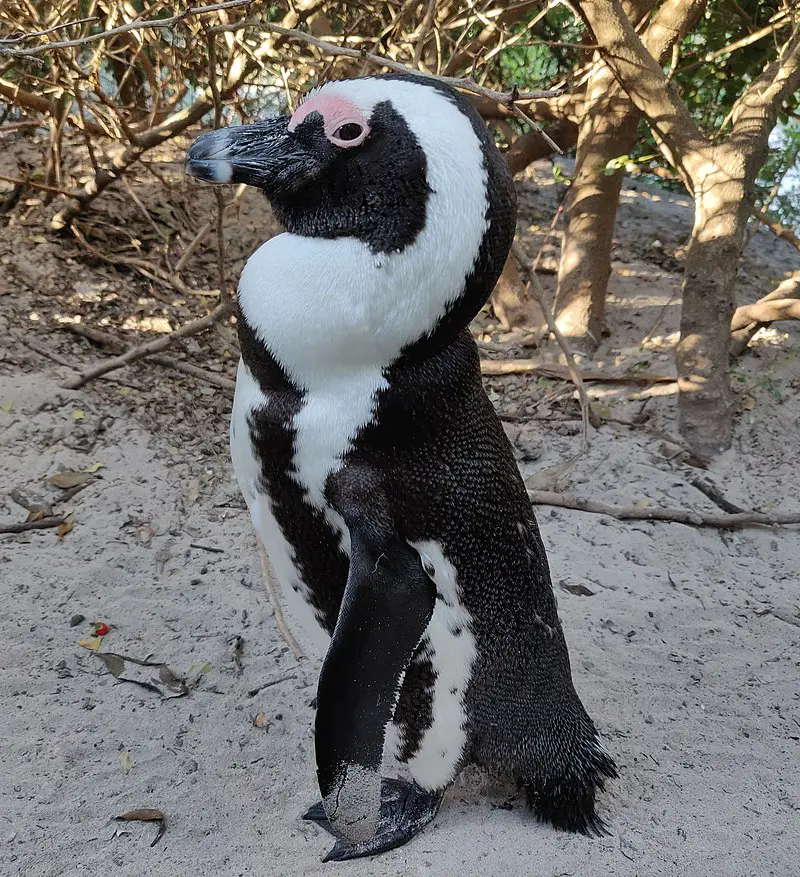
The African penguin, also known as the Cape penguin or South African penguin, is a flightless bird found only in southern African waters.
With a streamlined body and flippers adapted for a marine habitat, it is similar to all other extant penguins.
Adult African penguins can weigh between 2.2–3.5kg (4.9–7.7lb) and reach heights of 60–70cm (24–28in).
Unfortunately, the species is under threat due to habitat loss, food scarcity, and human impact such as oil spills and overfishing.
Conservation efforts are underway to protect this vulnerable species.Scientific classification:
| Kingdom | Animalia |
| Phylum | Chordata |
| Class | Aves |
| Order | Sphenisciformes |
| Family | Spheniscidae |
| Genus | Spheniscus |
| Species | S. demersus |
Also Featured In: African Birds, Birds You’ll Find in Zoo
47. Sea Eagle
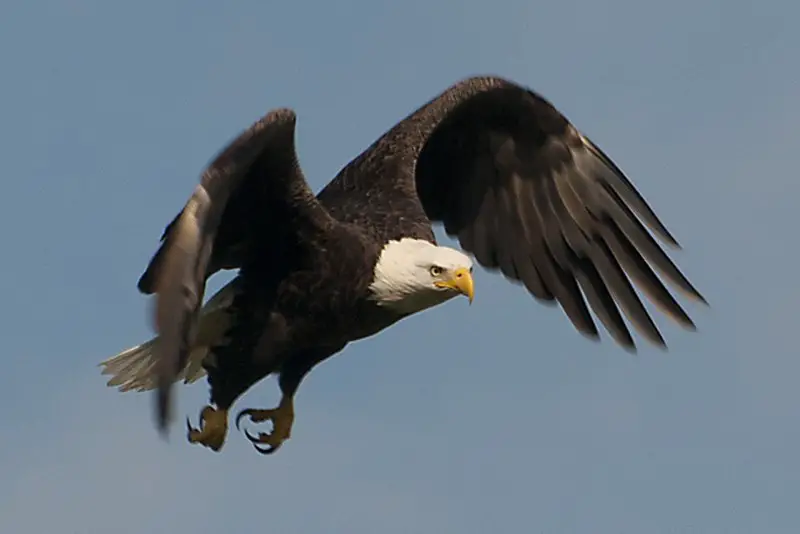
Sea eagles are a type of bird of prey found in the genus Haliaeetus within the Accipitridae family. These majestic birds are also known as fish eagles or ernes, particularly in reference to their distinctive white-tailed appearance.
The genus Haliaeetus was first described in 1809 by French naturalist Marie Jules César Savigny.
Sea eagles are adept hunters and are particularly skilled at catching fish, using their impressive talons to snatch their prey from the water’s surface.
While the majority of sea eagles live in coastal areas, some also inhabit inland rivers and lakes.
These birds are admired for their beauty, strength, and keen hunting instincts, and are a popular subject for wildlife photography and conservation efforts.Scientific classification:
| Kingdom | Animalia |
| Phylum | Chordata |
| Class | Aves |
| Order | Accipitriformes |
| Family | Accipitridae |
| Subfamily | Haliaeetinae |
| Genus | Haliaeetus Savigny, 1809 |
Also Featured In: Birds that Live in Greenland, Large African Birds You Need to Know
48. Noddies
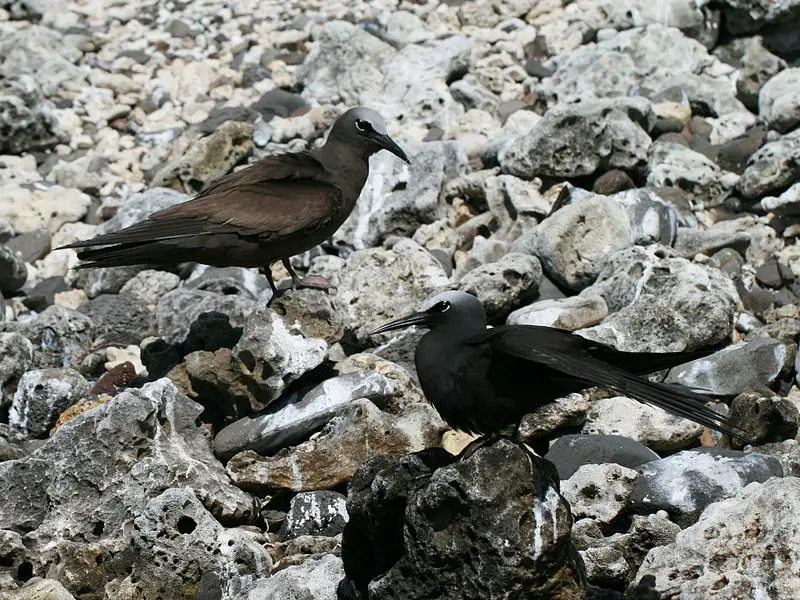
The Noddies are a group of seabirds belonging to the genus Anous. They are part of the Laridae family, which includes skimmers, terns, and gulls. There are five different species of Noddies in existence.
These tropical birds can be found all over the world, from Hawaii to the Tuamotu Archipelago in the Pacific Ocean, and from Australia to the Red Sea in the Indian Ocean. Noddies have distinct black, white, and gray plumage, which is helpful for identification.
They are known for their peculiar habit of nodding their heads frequently, hence their name. These birds are highly adapted for life at sea, with efficient wings and lightweight bodies making it easier to find food and fly.
Due to their impressive physical attributes and unique behavior, Noddies are fascinating creatures that are worth observing.Scientific classification:
| Kingdom | Animalia |
| Phylum | Chordata |
| Class | Aves |
| Order | Charadriiformes |
| Family | Laridae |
| Genus | Anous Stephens, 1826 |
49. Cory’s Shearwater
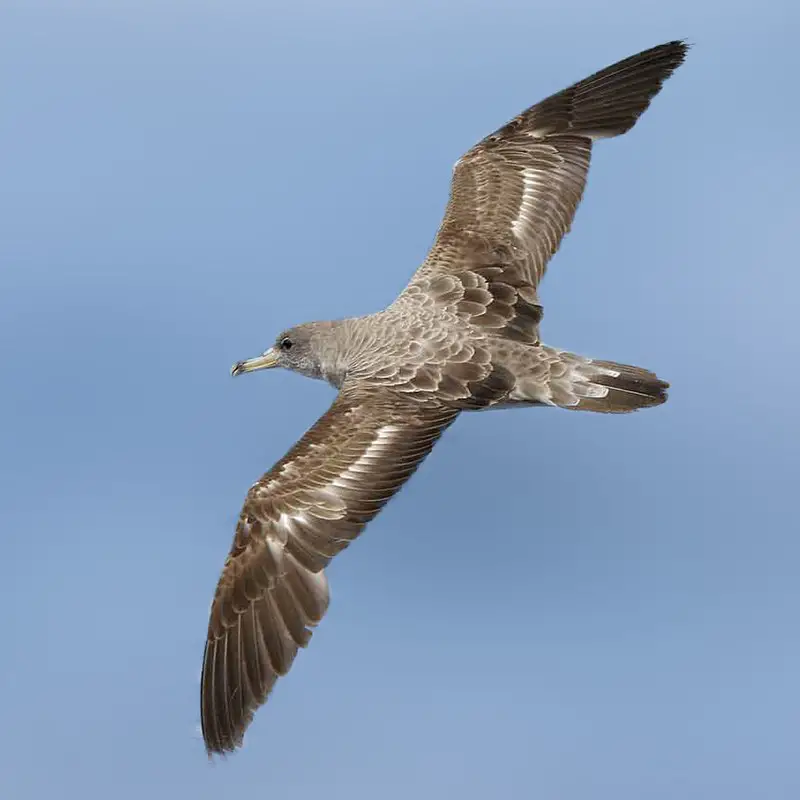
The Cory’s shearwater is a seabird from the Procellariidae family that lives in the eastern Atlantic. It breeds in colonies in rocky islands and has a wide range during the non-breeding season.
The bird was described by Charles B. Cory in 1881 and is larger in size compared to other shearwaters. It was previously classified as Scopoli’s shearwater but was later recognized as a distinct species.
Known for its long, slender wings, the Cory’s shearwater is adapted for long-distance flight and can cover great distances while foraging for food.
The bird’s plumage is mostly brown and gray with a white belly, and it has a sharply pointed beak that aids in catching prey.
The Cory’s shearwater is an important part of marine ecosystems and helps to control populations of fish and squid.Scientific classification:
| Kingdom | Animalia |
| Phylum | Chordata |
| Class | Aves |
| Order | Procellariiformes |
| Family | Procellariidae |
| Genus | Calonectris |
| Species | C. borealis |
Also Featured In: Birds of Lanzarote, Fuerteventura Island Birds You Need to See
50. Seaducks
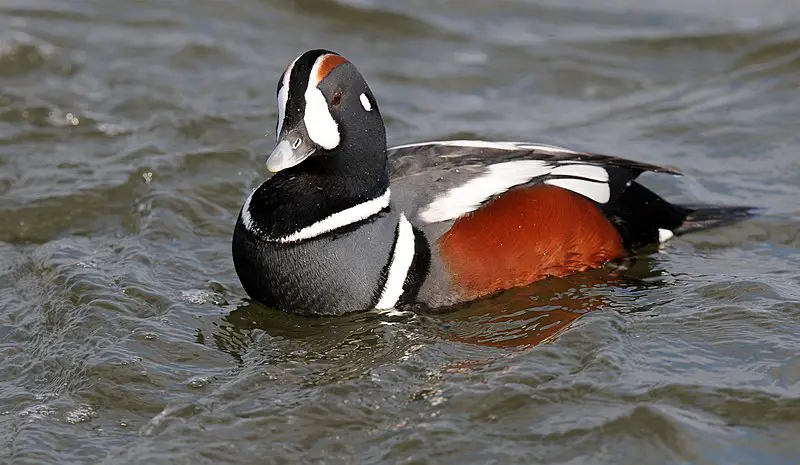
Seaducks, a tribe of the duck subfamily of birds, are known for spending their winters close to coastal waters. Some experts classify them as a subfamily, while others remove some genera from the group.
These ducks have specialized salt glands that allow them to tolerate salt water, although some of these glands are underdeveloped. The taxonomy regarding their classification is still incomplete.
Overall, seaducks are a unique group of waterfowl that have adapted to living near ocean environments.Scientific classification:
| Kingdom | Animalia |
| Phylum | Chordata |
| Class | Aves |
| Order | Anseriformes |
| Family | Anatidae |
| Subfamily | Anatinae |
| Tribe | Mergini Rafinesque, 1815 |
51. Short-Tailed Shearwater
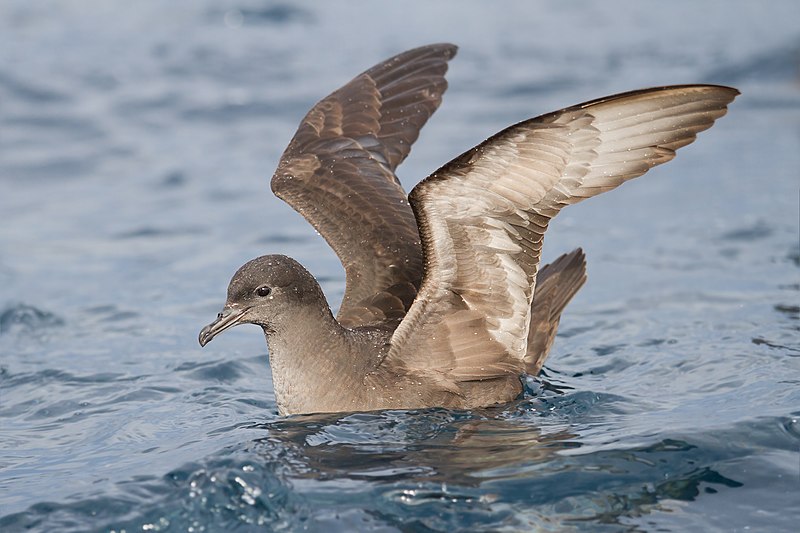
The Short-tailed Shearwater, also known as the Slender-billed Shearwater or Muttonbird, is a migratory seabird species that is native to Australia. It is the most common seabird in Australian waters and is commercially harvested for its chicks.
The bird mainly breeds on small offshore islands and feeds on fish, squid, and zooplankton. Its distinctive call can be heard from far away as it flies low over the ocean.
The Short-tailed Shearwater is an important species for both the ecosystem and the economy, providing food for predators such as foxes and eagles, and supporting a small-scale commercial fishery.
The species faces threats from climate change, pollution, and overfishing, highlighting the need for conservation efforts to protect this important bird.Scientific classification:
| Kingdom | Animalia |
| Phylum | Chordata |
| Class | Aves |
| Order | Procellariiformes |
| Family | Procellariidae |
| Genus | Ardenna |
| Species | A. tenuirostris |
Also Featured In: Most Common Western Australia Birds, Birds of Tasmania